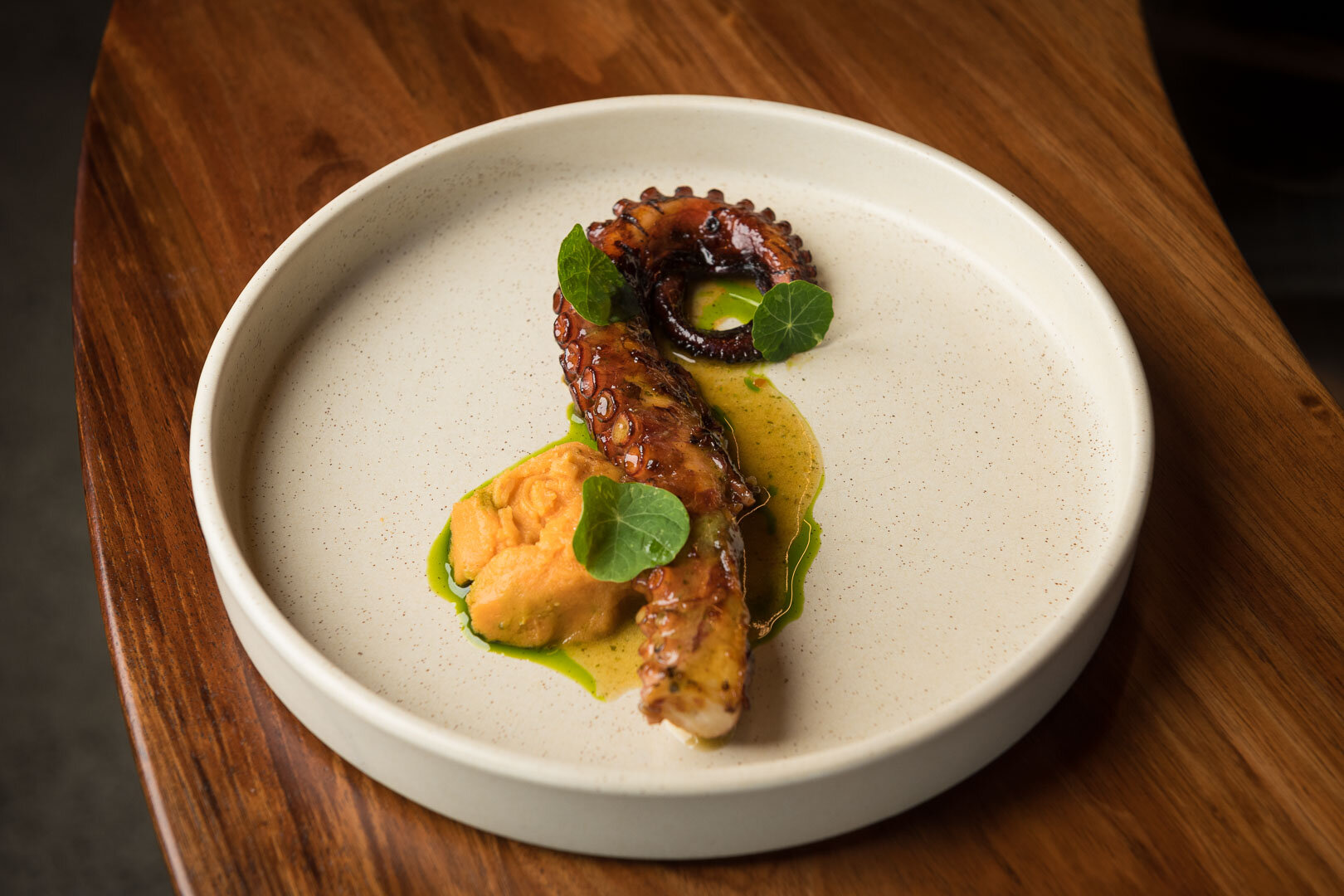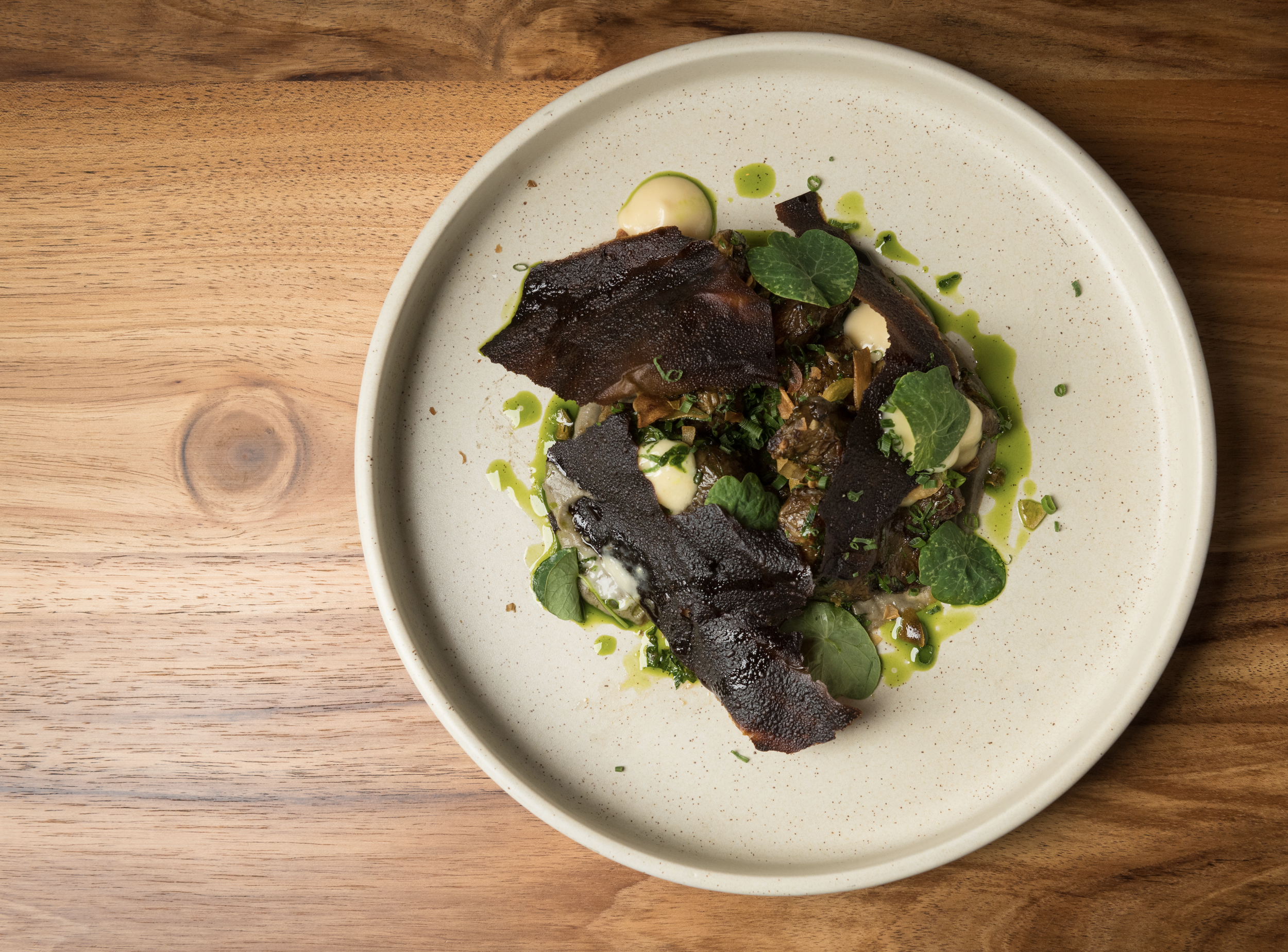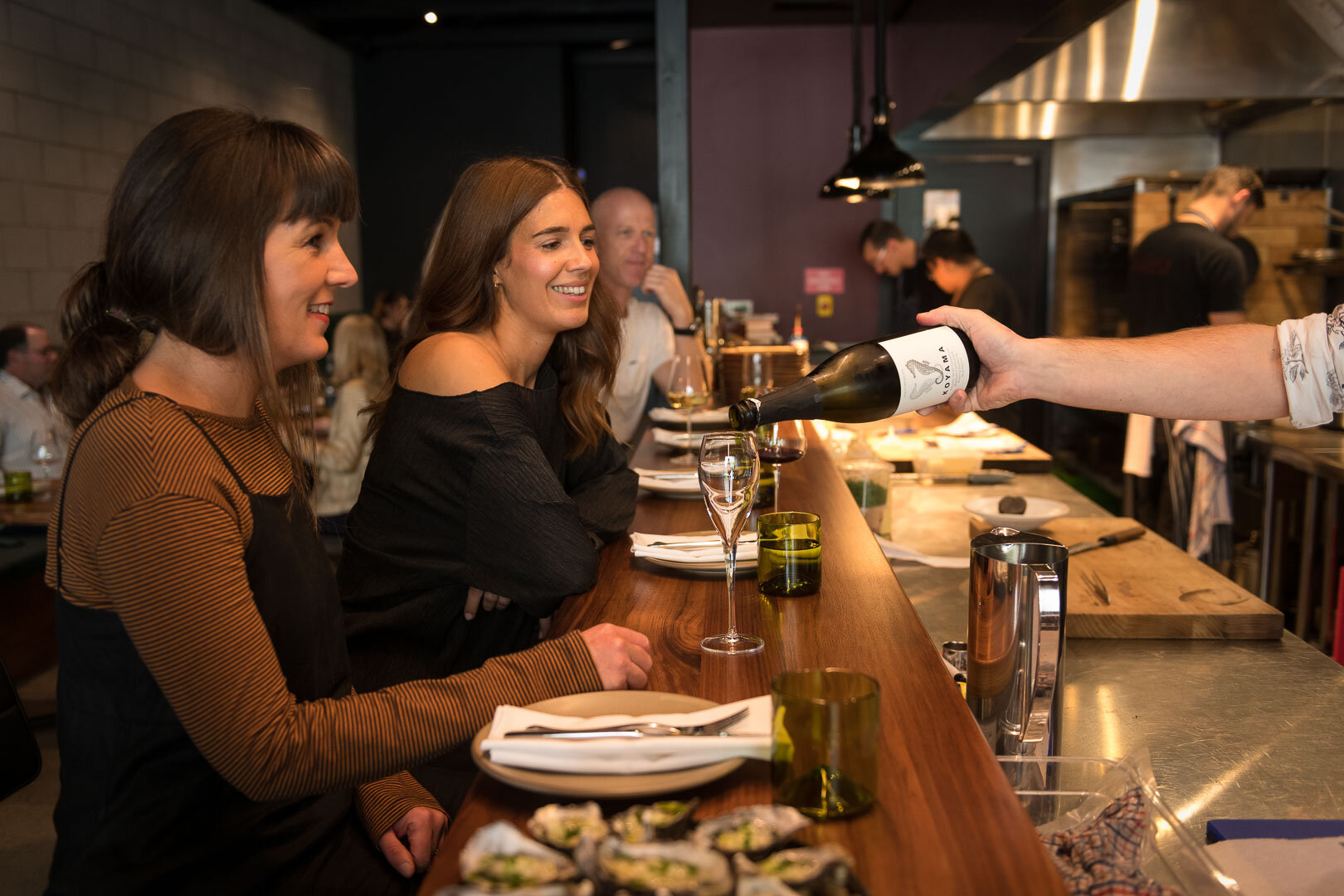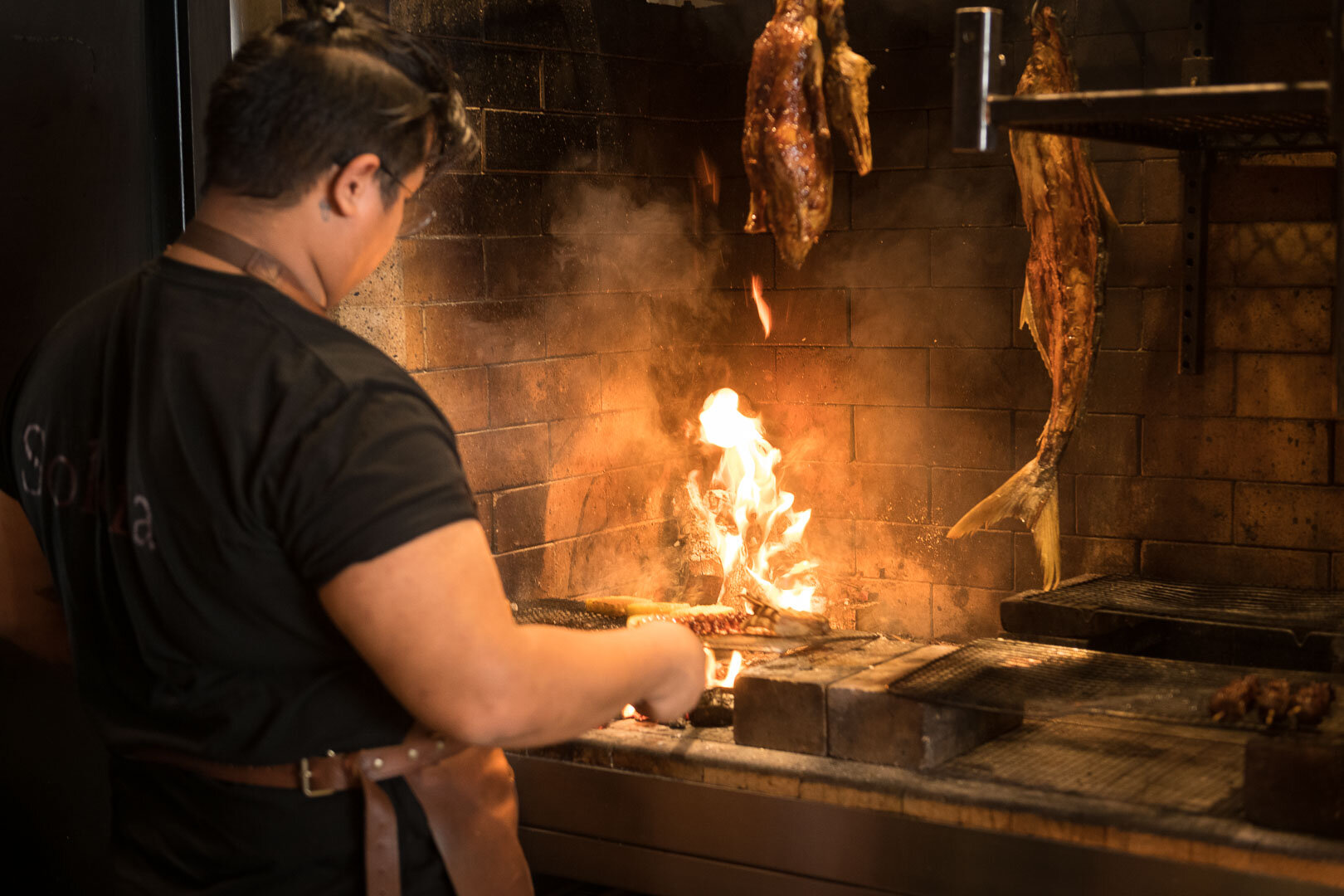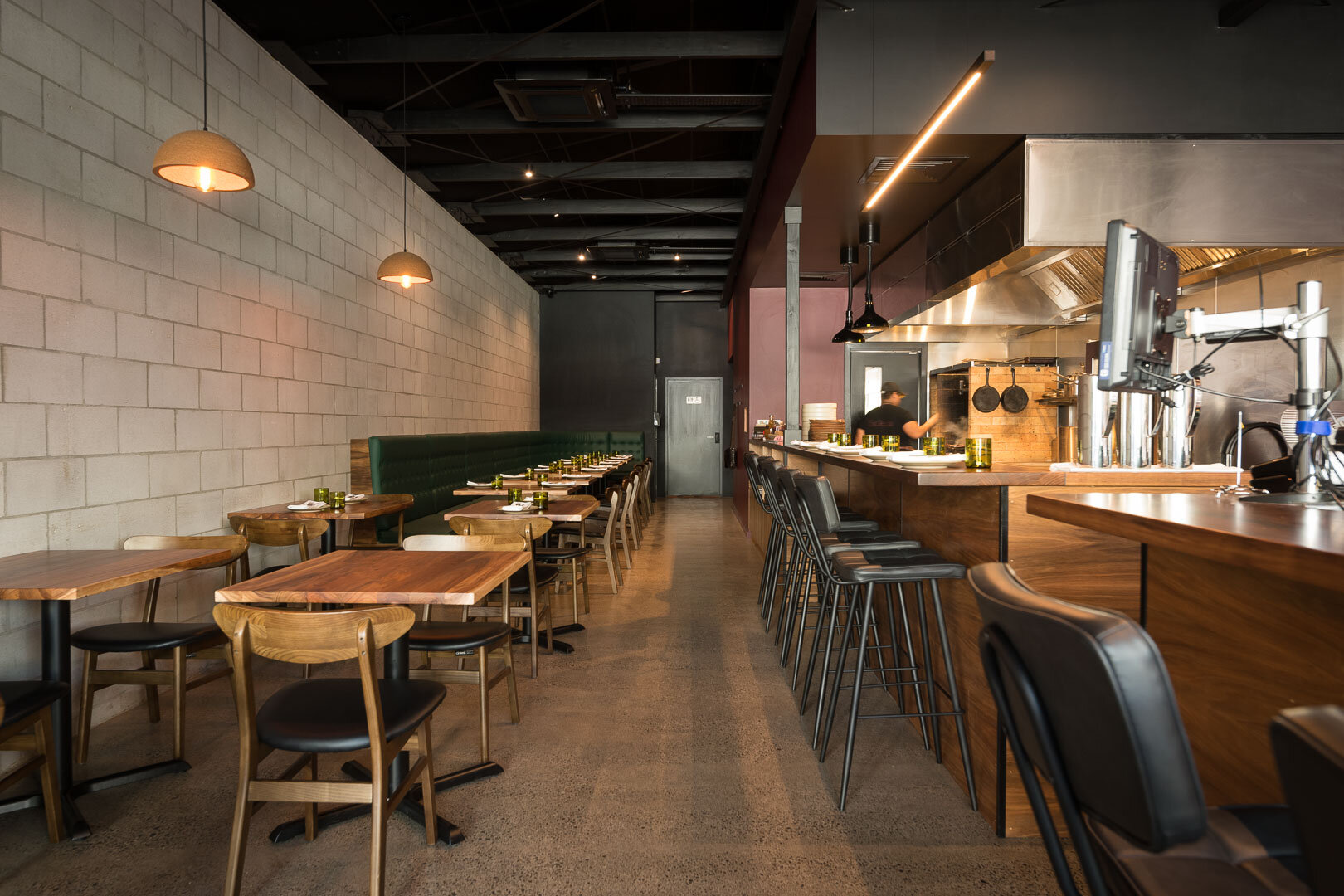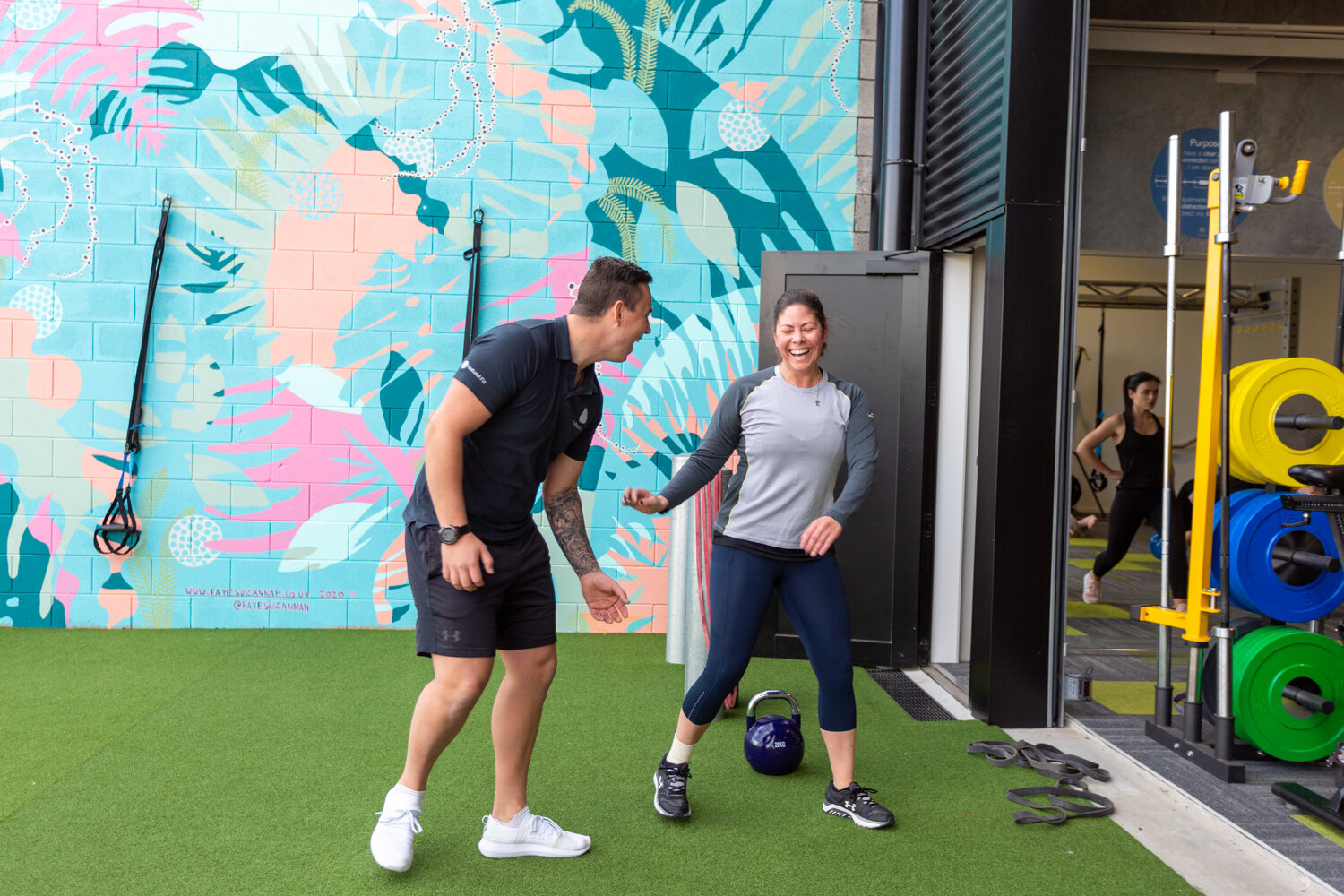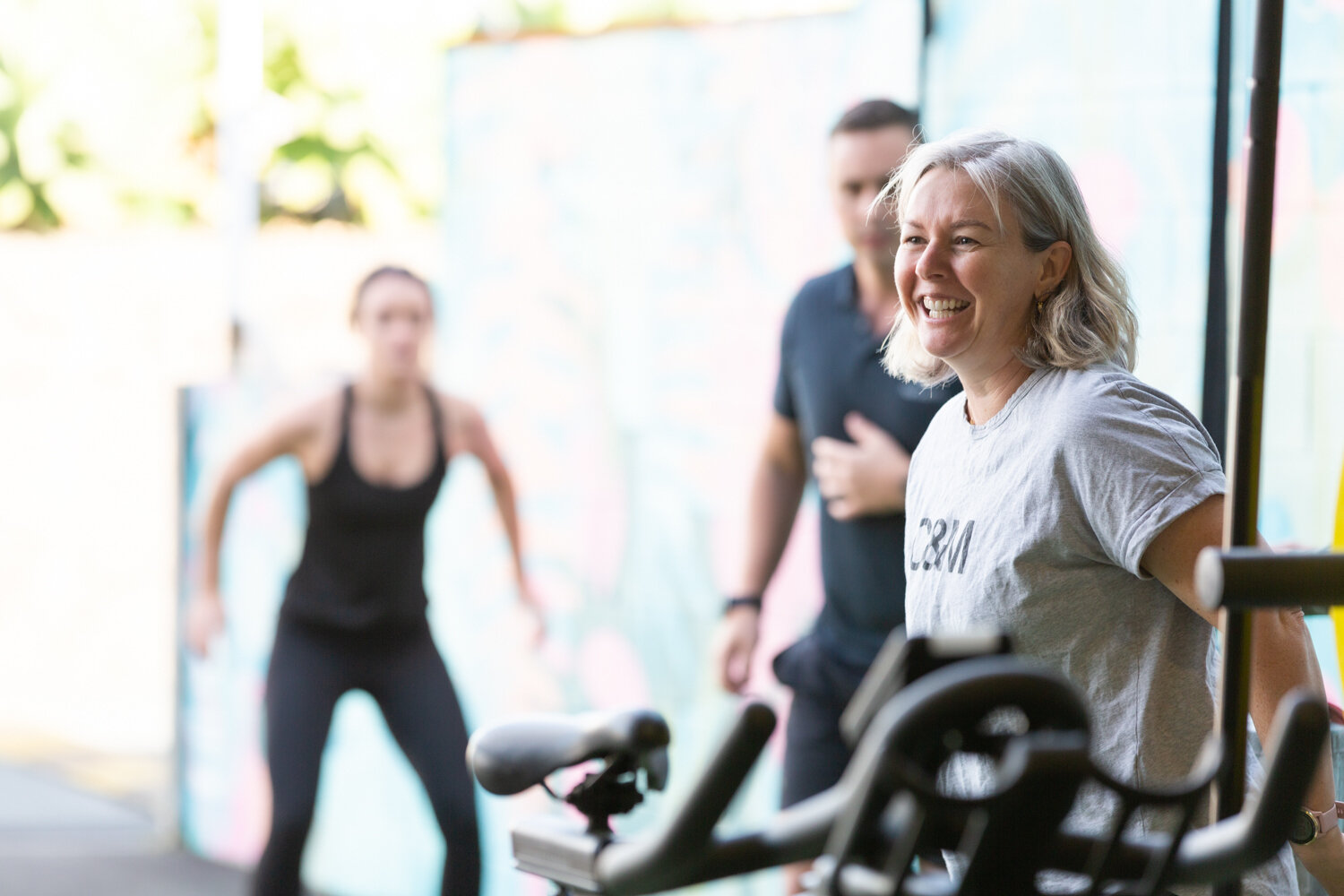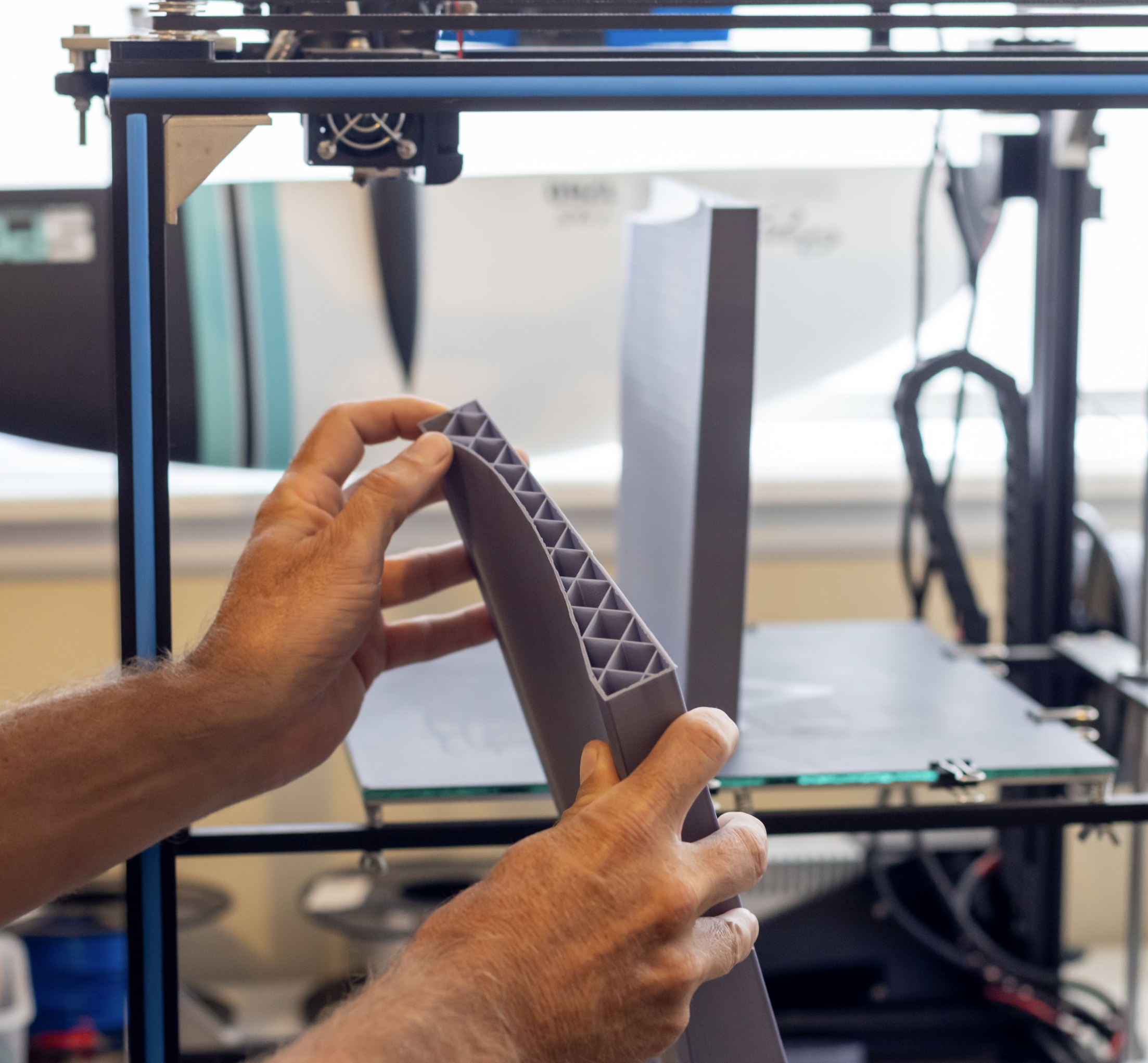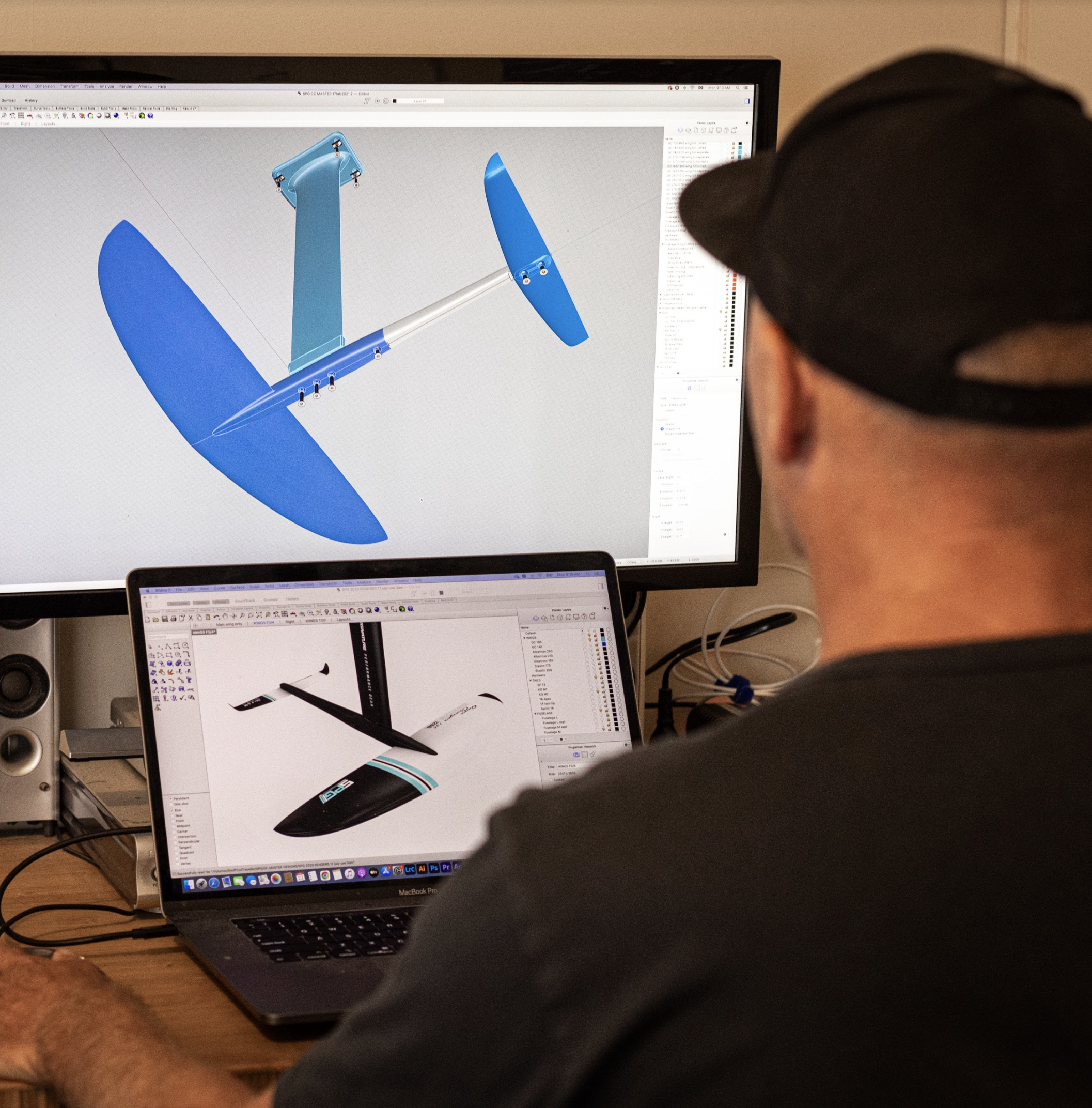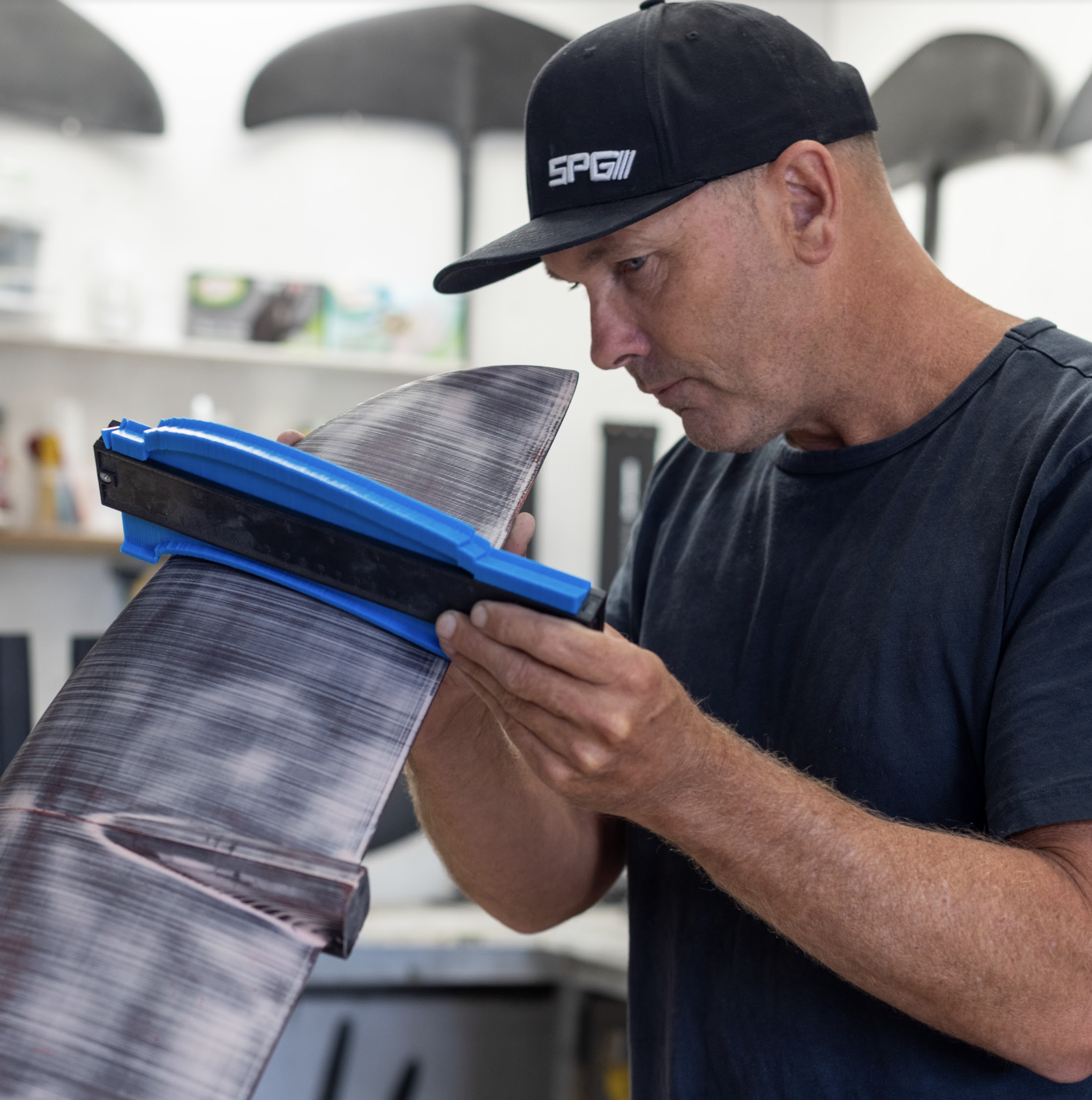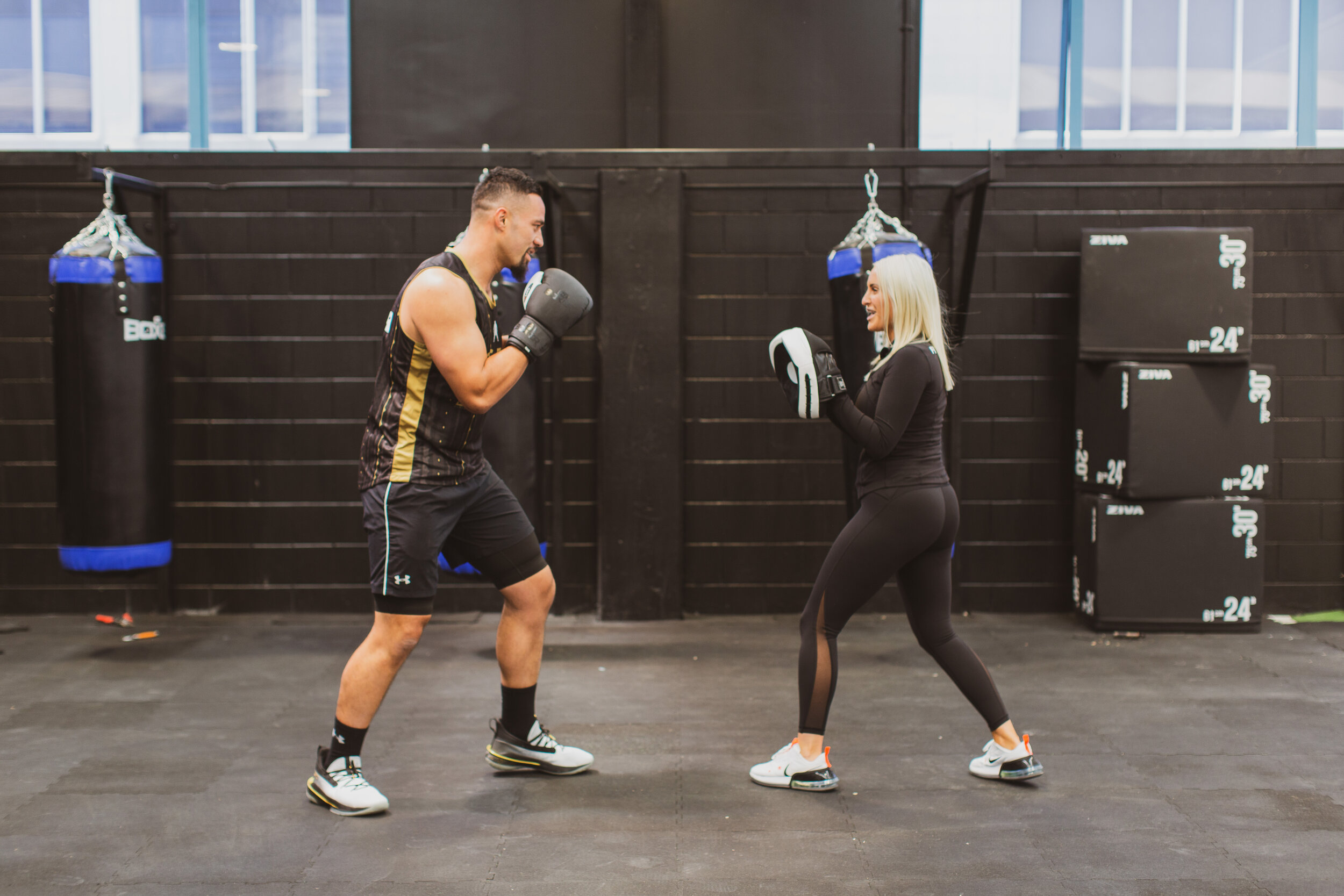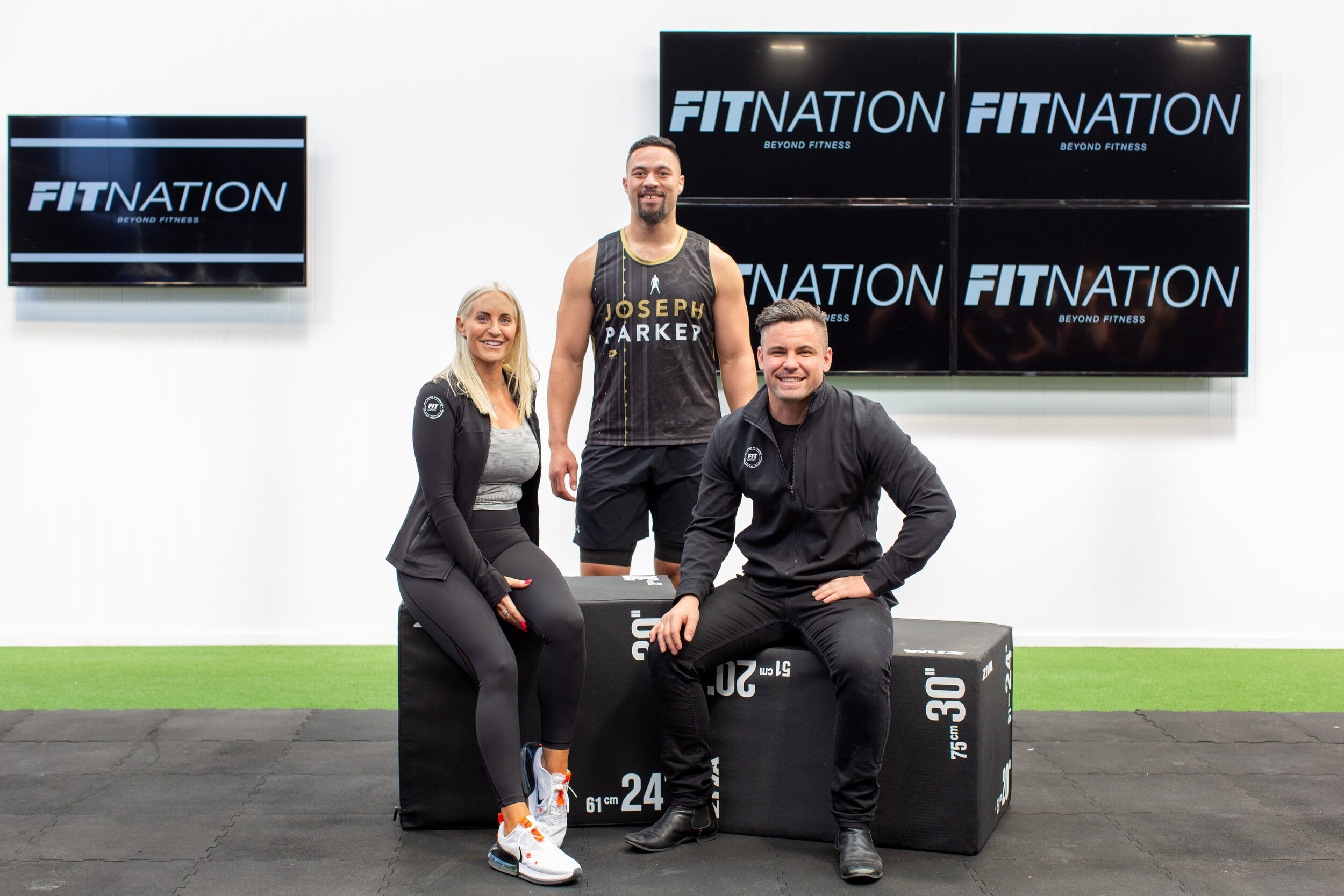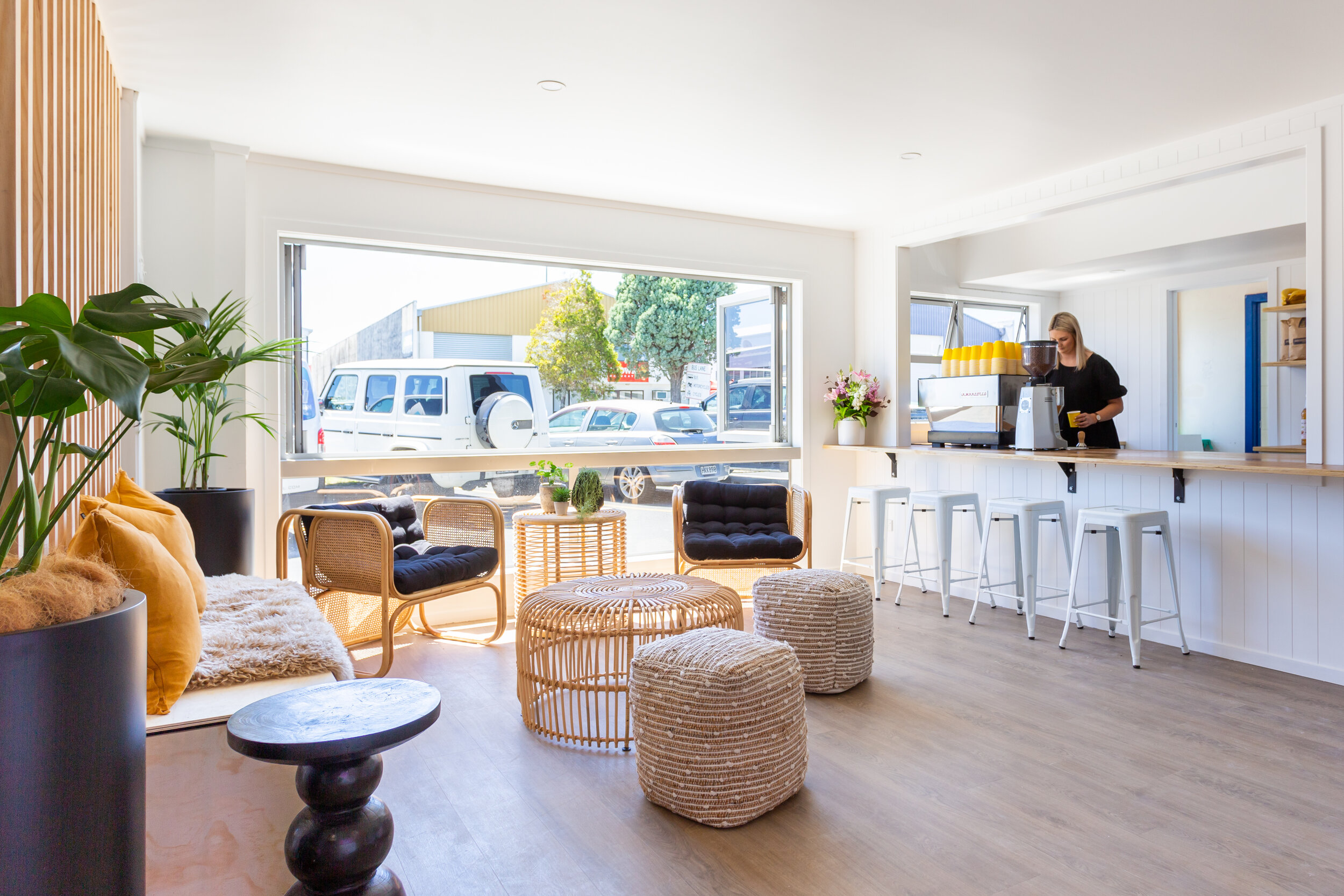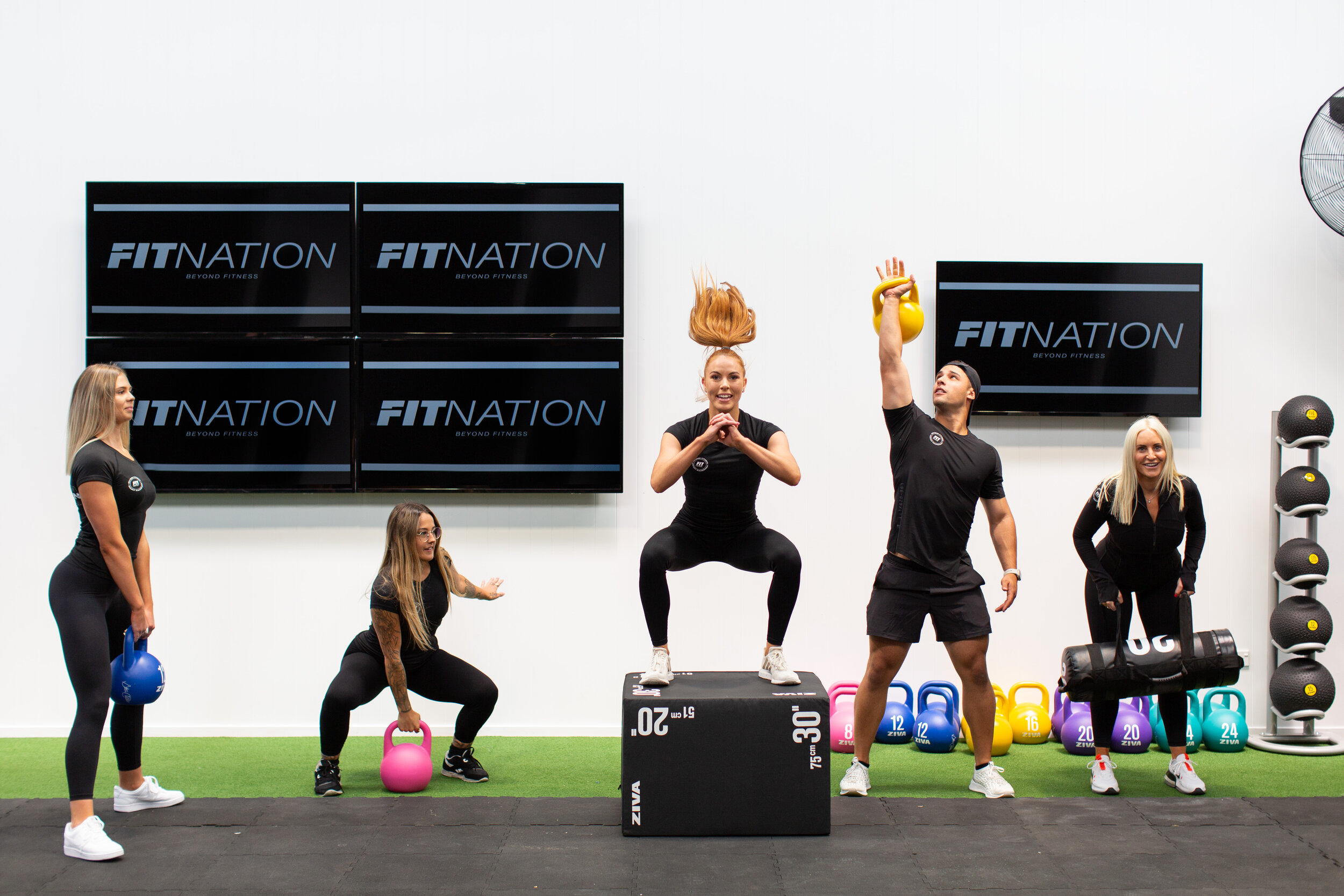More than skin deep
Anna Hayes from Skinvae might be new in town, but she’s an expert in her field – and knows how to build a successful business from the ground up.
Anna Hayes from Skinvae might be new in town, but she’s an expert in her field – and knows how to build a successful business from the ground up.
words DEBBIE GRIFFITHS | photos KATIE COX
Anna Hayes.
It’s common knowledge that the sun causes skin damage, but did you know modern phones also contribute to premature aging? Anna Hayes does – and with 18 years specialising in skincare, pearls of wisdom like that are common when chatting with the founder of successful brand, Skinvae.
“I’ve been in beauty since I was fresh out of school,” she says. “I grew up in Te Kuiti, studied in Hamilton when I was 18, and by 19 I had opened my first business. Before that, I worked for one other business for six months and that was Mount Skin and Body.”
It’s a full circle moment, with Anna recently adding that clinic to her string of businesses alongside Taupo and Cambridge. Recently she took over SELF_ in Mount Maunganui and rebranded it as Skinvae.
“It was a little nerve-wracking taking over the Mount clinic,” she admits. “My other two I started from scratch and picked my teams, but this was established and already doing well. When I told the girls what was happening it was great because they’d heard of my brand and were super excited to get our technology into their clinic. We put an emphasis on training, so the girls are upskilling weekly, which adds to their already huge knowledge.”
To say Anna has grit and determination is putting it lightly. A mum of two and Crossfit enthusiast, the 37-year-old entrepreneur rarely has downtime and loves it that way.
“I’ve grown up very driven in sport, representing New Zealand in triathlon for a few years, so I trained hard and worked hard. I had two jobs from the age of 14. My dad and my sister both had their own businesses, so could see that’s what I wanted to do too. I also like to call the shots; to be able to provide the treatments I want and to make sure I’m ahead of the game when it comes to trends and machinery.”
Skinvae in Mount Maunganui.
Anna makes no apology for focussing on skin – in fact, she takes great pride in being the ‘go-to skin clinic’ for her clients.
“We launched the Skinvae brand in Cambridge 11 years ago and that’s when we started specialising in skin. I love to see results and to take clients on a skin journey, particularly for people looking for non-surgical, non-injectable options,” she says. “We use DMK, Nimue and Pure Fiji, which have some amazing treatments. With skin, it’s never a one-session fix – especially with acne and pigmentation which can look worse before they get better – so we recommend clients sign up for a six-month plan to see real change.”
It’s more than skin, though, it’s the sense of connection, calm and confidence that’s infused during treatments.
“We have a lot of mums who come for the experience and it’s almost as though great skin is just an added bonus,” laughs Anna. “We like to educate about the importance of home care. Mums are often running around like headless chickens after everyone else, so their own ritual in the morning and night allows them to take a moment for themselves.”
Skinvae is at the forefront of innovation, attracting clients looking for cutting-edge solutions. Anna describes a new stem cell treatment from DMK, Stemzyme, as ‘revolutionary’ and says there’s been a big demand recently for body sculpting and tightening options.
“They call HIFU (High-Intensity Focused Ultrasound) the non-surgical facelift,” she explains. “As we age, we lose fat in our cheeks and our face drops. HIFU is a great alternative to Botox or fillers on either the brow or jawline, and you can use it on any part of your body – loose skin on your tummy, arms, or legs. It uses ultrasound energy to penetrate deep into the skin to tighten. It doesn’t get rid of fat, but it does work on the muscle and to stimulate collagen and elastin. You see instant results, but it takes three months to see the full effect.”
Anna urges teenagers, in particular, not to take advice from social media, which may result in them using products like Retinol that are too strong and could eat away at their skin barrier.
And her number one skincare tip?
“Use sunblock,” she says, without hesitating. “Our sun is horrific. If you’re going to buy one product, get a good SPF and make it one that also protects against blue light from phones and computer screens. We see a lot of people with more pigmentation and crepey skin on the side of their face they hold their phone up to. Even if you work in an office, wear sunscreen every day.”
After almost two decades in the industry, Anna knows that 80 percent of skincare results come from what people do at home and their professional treatments simply provide the extra 20 percent that push it further. With that in mind, her vision is to expand her chain of beauty clinics.
“We’re ready to be the number one brand for skin in New Zealand, but all I can say right now is watch this space.”
All aboard
A dedicated rum bar in the Mount is making waves with its refined mixology and sophisticated eats
A dedicated rum bar in the Mount is making waves with its refined mixology and sophisticated eats.
Words Hayley Barnett
It’s official: The rum revival is real. While 2023 is being hailed as the year rum makes its comeback, there’s one new bar and eatery getting fully on board with the trend.
The dynamic duo behind Mount Maunganui’s Brew Co and Hide Thirst and Hunger recently set sail with another gem, Sailor Galley and Rum Bar. Also located along the Mount Main Street, where the now-closed Fish Face eatery was situated, this new project is a labour of love.
When the space came up for sale Matt and Kimberley Hayward jumped at the chance to secure it, with the aim of expanding its back garden terrace for the summer crowds, to take full advantage of the sun-laden deck.
The original plan was to set up a sophisticated wine bar, after the couple recognised a need for bars and eateries targeted at their more mature clientele. But, mulling over the idea, they decided it would be much more fun to do something a little bit different – and more relevant to their sunny seaside surroundings. And so they ran with the idea of a rum bar.
Matt and Kimberley have held true to their promise of sophistication – this isn’t some grubby old sailor’s quarters. The restaurant gives off more of a super yacht vibe. The modern fit-out feels very much like a wine bar, but offers premium rum and delicious cocktails, from local labels like Armada Spirits in Pāpāmoa, to rums further afield like Flor De Caña from Nicaragua.
The menu is suitably sumptuous with dishes like Smoked Bone Marrow on Sourdough and Burnt Butter Crumpet with Blue Swimmer Crab.
Despite the name, the menu isn't too heavy on seafood. Executive chef Perrin Yates, former chef of Picnicka and Clarence Bistro, has designed a travel-inspired culinary journey offering up a good mix of refined and favourite go-tos – some of which are blended to create something delightfully gourmet yet casual.
On the snack menu is the popular Boston Crayfish Roll as well as the Parmesan Churros with fire roasted capsicum sauce, both equally tasty.
Regardless of whether you're a sun lover, a rum drinker, or just a fan of good food, Sailor will hit the spot.
Take a dive
UNO editor Hayley Barnett experiences the quintessential American dive bar experience that is Palace Tavern.
UNO editor Hayley Barnett experiences the quintessential American dive bar experience that is Palace Tavern.
Walking past all the bright, shiny bars and eateries on the Mount's main drag, Brad Dellar and Sam King had a revelation. There was nowhere they wanted to go. They were tired of frequenting bars that only catered to certain people of a certain age bracket and felt there was nowhere men in their thirties truly belonged. They wanted dark and dingy – where everyone knew their name, but no one cared to use it.
"We wanted it to have an American dive bar sort of feel," says Sam. "A place where the locals can come hang out, have a beer, a burger, a game of pool – we spent a lot of money on that pool table!"
Having originally opened around the corner as Palace Burger on the Mount main street, Sam and Brad decided to start over with the décor and a rebrand when they moved to Banks Ave in November, 2022.
The glass 80s-style ashtrays outside give you a taste of what you're in for. Indeed, the bar is dark and dingy but, strangely, the UNO team don't want to leave.
The menu is mouth-wateringly good. From the Buffalo Burger to the Hoedown, there's a definite American vibe going on, with a bit of a Kiwi twist. The Crispy Boy is packed with potato crisps, along with a smashed patty, bacon, cheese and onion. I went for the Classic Chicken, one of their most popular burgers, and washed it down with Maple Butter Wings, Jalapeño Poppers and Cheese n Gravy Fries. If you're going to eat like a man, you might as well do it right.
Everything was perfectly more-ish, tasty and extremely satisfying – exactly how Brad and Sam like their food.
"...We're not really the place to come if you're trying to lose weight."
Palace Tavern might have been set up as a place for 30-something men, but they've set it up so well that it's naturally become inclusive. "We've made our fair share of lettuce burgers, but we're not really the place to come if you're trying to lose weight," laughs Sam.
And, despite refusing to play Top 20 hits, they can't hold the crowds back once the wee hours of the morning swing round. "We have long lines right up the road every weekend," says Brad.
It's a dark place with a cool vibe, cold craft beer, amazing cocktails and great food. It's the place Brad and Sam always wanted to go. And, now that we've been, it's a place we can't wait to head back to.
Palaceburger.nz
Rolling in the deep
Mount Maunganui welcomes a restaurant that really is worth its salt.
Mount Maunganui welcomes a restaurant that really is worth its salt.
WORDS Hayley Barnett
Walking into Saltwater, you can practically smell the sea air and hear the gentle clanging of the docks. Its nautical theming, all clean whites, crisp blues and deep wood instantly reminds you of where you are, and really gets your stomach grumbling for some of Aotearoa’s finest seafood.
There’s a lot to take in and the vibe is buzzing. Diners chatter, the open kitchen is a hive of activity and the lengthy ice bar tempts with a salivating range of freshly caught fish, oysters, scallops, mussels and other seafood delights.
Everything about this seafood grill and oyster bar, that’s located in the middle of the main strip of Mount Maunganui, feels premium. Everything, that is, except the prices.
“We wanted it to be approachable. We didn’t want a pretentious seafood restaurant that most of the country
can’t go to,” co-owner Nick Potts says. “We wanted fish n’ chips, fish burger, Coromandel mussels. These are all great dishes but we didn’t want a price tag that was unattainable by the public.”
Along with his business partner Jay Thomas, they’ve given classic Kiwi kai an upmarket makeover while keeping a relaxed and welcoming vibe to the restaurant. Along with those favourites, there’s also more exotic dishes like grilled octopus, a soft shell crab burger and freshly prepared sashimi on offer.
And if fish isn’t your dining partner’s bag, there’s a range of non-seafood dishes to try, including Eye Fillet Carpaccio, a beef burger and a coconut curry.
But it’s hard to see your appetite returning to land after grazing the menu and its ocean treats. The calamari came in a jovially light batter and was served with Cajun mayo that had a delicious bite to it. My fiancé enjoyed the prawn po-boy so much he seriously considered ordering another and I couldn’t get enough of those ocean-fresh oysters and mussels.
“We’ve tried to keep the seafood as the hero of the dish. We haven’t tried to overcomplicate it with huge flavours,” Nick explained. “It’s about the quality of the seafood we’re using. It’s about great food that anyone will enjoy.”
Nick also owns fine-dining restaurant Solera down the road so, as you’d expect, everything here is mouth-wateringly delicious. And, now that it's opened, it’s hard to believe there wasn’t a seafood restaurant of this quality here already. It seems such an obvious fit for the sea-loving folk who live in and around the Mount.
Work, store, play
Meeting the high demand from commercial tenants and investors in Tauranga, the developers of a new venture in Mount Maunganui expect strong response, equal to that of its sister complex, now underway at Pāpāmoa.
Meeting the high demand from commercial tenants and investors in Tauranga, the developers of a new venture in Mount Maunganui expect strong response, equal to that of its sister complex, now underway at Pāpāmoa.
Words Jo Ferris
The Hatch – The Mount embodies the concept of work, store and play – a slight variation on Tauranga’s wider approach to work, live and play. These units aren’t designed as live-in premises. However, their innovative concept embraces a workplace where people will enjoy the comforts of home in a vibrant village community.
Earmarked for a prominent location in MacDonald Street, The Hatch offers 38 units, from 60sqm to 106sqm. Most units will include two car parks and additional parking will be available to lease.
Sitting near a major flyover and arterial link at the junction between Hewletts and Maunganui roads, this is minutes from the airport, sporting venues, shopping centres in downtown Mount and Bayfair, and harbour bridge access to Tauranga and port. Surrounded by a myriad of recreational, educational and business amenities, The Hatch offers beneficial advantages for tenants as their businesses feed off one another and the surrounding precinct.
Like its Pāpāmoa sibling, the sympathetic design creates a mini community within an aesthetically pleasing complex. Matt Allen from Cube Architecture designed a complex in four blocks, with a large open car park at the rear. There will be two main carriages – both flanked by units along the boundary on each side – and both entries off MacDonald Street. These will be linked by a lane leading to the office-styled units at the rear. Retail units running along the street front will present a boutique showcase for the complex. Their vehicle access will be behind each unit, off the lane.
Enhancing this aesthetic approach, large roller doors will create a wide-open perspective for the eclectic appeal of the units facing the main carriageways. Office units will enjoy a calmer outlook to the lane.
Buoyed by the success of Pāpāmoa’s Hatch, Colliers Tauranga managing director, Simon Clark is excited to repeat the confidence shown in this type of development. Pāpāmoa is all but sold and interest in this development was sparked early on as a result.
“The Mount is extremely desirable. Vacancies are at record lows and tenants/owner-occupiers are starved of opportunities in this tightly held industrial precinct.”
Simon says The Hatch’s innovative design fuses commercial and light industrial in hybrid workspaces, making it perfect for forward-thinking businesses. The thought behind this kind of development combines adaptability with accessibility. Sophistication meets industrial aesthetics. And, while the emphasis is on a vibrant and eclectic work environment, The Hatch’s mantra highlights its other purpose for storage.
“Whether you’re setting up a new venture, looking for more versatile premises or simply need somewhere to store your toys, The Hatch – The Mount offers a unique solution at a competitive price point.”
Marketed exclusively by Simon and fellow Colliers broker Rob Schoeser, prices start at $754,000 plus GST (if any), with construction estimated to start mid-2023.
colliers.co.nz
Get crafty
If your beer knowledge is a little cloudy, then Mount Brewing Co’s head brewer Pawel Lewandowski is the perfect can-noisseur to clarify the common craft beer varieties.
If your beer knowledge is a little cloudy, then
Mount Brewing Co’s head brewer Pawel Lewandowski is the perfect can-noisseur to clarify the common craft beer varieties.
Photo + Styling Roz McIntosh
XPA
Golden Hour Hazy XPA 4.7%
Hazy IPA is a unique bond created between malt, hops and yeast and like the name implies it has a cloudy appearance. Golden Hour – Hazy XPA has lower than regular IPA alcohol content, much drier body yet a fruity, juicy hoppy hit (think passionfruit, green pineapple, lime with a touch of coconut) delivered by careful selection of American and New Zealand hops, malts and yeast.
APA
Mermaid's Mirth 6%
American pale ale replaces traditional English hops with modern bold, citrus, tropical, pine-like American varieties. APA continues to evolve as breweries experiment with different local ingredients. It's one of the most food-friendly beers that goes very well with meat and cheese. We brew our clean, crisp, medium-bodied Mermaid's Mirth only with American hops.
Pilsner
Mountie 5.2%
All pilsners are lagers, but not all lagers are pilsners. Pilsner is always bright in colour, should be more bitter and hoppy than lager yet smoother with more malt characteristics than IPA. Mountie is brewed with four different New Zealand hops, giving it a more grassy, citrusy and bitter flavour than lager, which makes this pilsner a more complex drinking experience.
NZ IPA
Sea Beast 6%
Indian Pale Ale originated in England for shipping to the British colonies in India in the 18th century. It was pale only compared to the usual darker brews of the day, quite hoppy and had a higher alcohol content (a great preservative for the long trip to India). A good example of a modern IPA is our Sea Beast. It's brewed using only Kiwi hops, giving it a gooseberry, citrusy, floral and piney flavour. It's bitter and balanced with arich malt character.
New England IPA
Crazy Hazy Daze 6.4%
A go-to for lovers of beer in its prime – unfined and unfiltered. Our New England IPA, where bitterness
along with big hoppiness
is balanced with a fuller and rich body, is packed with Citra, Amarillo and Nelson Sauvin hops used only in the whirlpool and dry hop addition, bringing a mango, passionfruit, zesty-like flavour and aroma.
Lager
Relax it's only a lager 4%
This type of beer tends to be less hoppy than pilsner, easier to drink in bigger quantities and, like Relax, it should be clean, crisp and refreshing. A lager uses simpler ingredients so it's far more difficult to brew nice, clean lager that is free from off flavours — because all the mistakes occurred during the brewing process are much harder to cover, which is why we use the best brewing equipment and processes.
IG: mountbrewingco.brewery
Perfect match
These scintillating summer pours from Mount Brewing Co. will tantalise your tastebuds and keep you cool on the hot, sunny days to come. Find your favourite and match with our delicious meal suggestions.
These scintillating summer pours from Mount Brewing Co. will tantalise your tastebuds and keep you cool on the hot, sunny days to come. Find your favourite and match with our delicious meal suggestions.
Words Hayley Barnett / Photo Emma Galloway
Feijoa GIN & TONIC - Tempting tangy tipple
You can’t go past the sweet-yet-tart taste of the country’s favourite seasonal fruit, the humble feijoa. Meal match with your favourite blue cheese and a drizzle of honey for a complementary kick.
Peach & Apricot GIN & SODA - Fresh and delicate
Two summer stone fruits, muddled with gin and soda, this mix creates a drink that’s perfect for the beach and beyond. When dining at home match with the spicy heat of a rogan josh.
Pink GIN & TONIC - Charm in a can
Crisp premium gin and tonic comes blended with juicy red raspberries, to give it a taste to die for. Pair with lamb kebabs cooked in a berry marinade and, voilà, you have your barbecue menu sorted.
Classic APPLE CIDER - Cool, timeless classic
Traditionally made apple cider is given a makeover by blending it with fresh and juicy apples. Not too sweet, not too dry, apple cider is perfectly matched with a roast pork fillet salad.
Dark n’ Stormy CIDER - Spice up your life
Real ginger, molasses and spices make up this unique and delicious cider. With a medium-sweet cider base, the aroma is familiar, but really kicks off when paired with a spiced ginger pud.
Strawberry & Lime CIDER - Here comes the sun
Cool down with a fruity thirst-quenching cider. Strawberry and zesty lime offer a medium sweetness and tart finish when matched with a savoury strawberry salad.
Tart Rhubarb Cider - Sharp yet refreshing
Perfect for spring, this distinctive cider will hit the spot with rhubarb lovers. It’s fun, it’s elegant and it’s particularly delightful when paired with a creamy carbonara.
Blossoming with care
A newly opened childcare centre in the Mount holds true to its philosophy of creating authentic, inspiring early childhood experiences.
A newly opened childcare centre in the Mount
holds true to its philosophy of creating authentic, inspiring early childhood experiences.
Words Catherine Sylvester
Alisha Merriman had a clear vision of exactly what gap she wanted to fill when creating an early childhood education centre. She knew, not only because of her many years as a teacher in this sector, but also firsthand, as a mother of two young children. What she envisioned was a unique learning environment for children and their whānau, where they could thrive, grow and learn.
Bloesem (“Blossom”) – a nod to Alisha’s Dutch heritage – is precisely what the centre believes its tāmariki will do. Backed by research highlighting the importance of environment being pivotal to learning, the centre has a calming feel to it. Walls are painted in neutral colours, with spaces left uncluttered. “Aesthically pleasing environments enhance the children’s learning journey,” Alisha explains.
By creating physical spaces that are enriching for children to learn and grow in, Alisha and her team share their passion for creating inspiring new experiences daily. The team carefully create a teaching plan together, incorporating invitations to play based on suggestions from the children. Their aim is to instil a love of learning in their community.
With the first Bloesem opening in Te Puke in April 2019, the team have taken the time to firmly establish their vision and strong relationships with the children, whānau and staff. A high priority for Alisha is that they stay true to the “why” of Bloesem, and that means ensuring the right team of people working together to uphold the vision, philosophy and consistency of the centre. “Keeping it authentic is so important,” says Alisha.
“At Bloesem, children and whānau are part of a nurturing, caring, joyful, tranquil environment.”
The Te Puke centre has thrived, despite the unexpected arrival of a global pandemic less than a year after opening. So when a spacious site opened up in Alisha’s own neighbourhood, the Mount, she knew it was the perfect time to expand the vision and provide another community with the inspiring Bloesem way of early childhood learning.
Opened in August, Bloesem Mount Maunganui also carries the vision statement: “Value and honour whanaungatanga, taiao, rangatiratanga which reflects the good of reciprocal relationships, for the good of the environment and for the good of growing self-confidence.”
With a strong philosophy and a growing need for more quality early childhood education centres, Bloesem is sure of its identity and what it offers the communities it is part of.
Zen by design
East meets west in this stunning home’s Japanese-inspired aesthetic.
East meets west in this stunning home’s Japanese-inspired aesthetic.
Words Jo Ferris
This Mount Maunganui home’s dramatic street-front greeting showcases a striking look born in Japan. Yakisugi’s authentic process of charring sugi cedar not only improves the timber’s life span, it adds another layer to this home’s haunting story.
It’s a story of evolvement – from this home’s birth in 1956 to a stunning epitome of the Mount’s coastal vibe.
The weatherboard construction remains, but that’s about all. Over the years, different owners have embedded their own mark. The vivid allure of black, vertical shiplap on walls curving around this home’s lower area are a fitting imprint by these vendors.
Stunning aesthetics aside, two hidden elements enhance this driveway’s function. Power in one corner offers
a charge point for vehicles and parking for a motorhome. A gas point in a recess allows for the addition of screen doors to hide bottles and utility bins.
The garage is another improvement by these owners. Lined over block, carpeted and finished with extra detail, it is now a multi-purpose zone. An internal stairwell leads up to the first level. For visitors, the
sugi-clad steps sweep up through a coastal-themed garden, where resident tuis haunt the pōhutukawa. They’re so frequent and familiar, these owners have even named them.
Other than original native timber flooring throughout the home, the décor was completely transformed by prior owners.
One intriguing feature pays homage to the construction. A distressed weather-board panel hanging on a passage wall as a work of art, is actually a disguise for the hot water cylinder behind.
Apart from one original window in the master bedroom, joinery was replaced with double-glazed aluminium. Plywood is a statement element that instils tone and texture in key areas. Feature walls showcase ply’s natural blonde finish, while black negative detailing makes a striking effect in-between the panels. Kitchen cabinetry is finished in laminated plywood, while timeless stainless steel benches are a practical surface cooks will appreciate.
Open-plan living and outdoor flow maximises space to connect with areas outside. A morning balcony at the front gazes out to sea. At the rear, there’s an intimate link with a secluded backyard oasis. The third bedroom also opens out to this sun deck and shelter from afternoon breeze within this tropical sanctuary. It’s an easy-care garden – with a corner for veges and a hidden sink bench for filleting fish.
The master bedroom commands the front-row ocean view. A second living area above, elevates this to a grandstand coastal outlook. With glimpses to three islands, Motiti sits directly in front and waves can be seen lapping on the beach. This is a spacious, multi-purpose zone – an invitation for leisure or work. With sun streaming inside, an air conditioning unit keeps life cool in hot weather. There are two more heat pumps elsewhere, plus a wood burner. Highly efficient, it’s another feature which matches this home’s distinctive vibe.
Within walking distance to the beach and cafes, this impressive home awaits another chapter. Inspection is invited, and more information is available on Oliver Road Real Estate’s website.
Driving excellence
Mount Maunganui’s only driving range brings technology and pro coaching together to make improving your golf game even more enjoyable.
Mount Maunganui’s only driving range brings technology and pro coaching together to make improving your golf game even more enjoyable.
Words Dan Collins / Photos Jahl Marshall
“Golf’s quite infectious,” Scott Pickett smiles, as the constant, gentle thwack of golf clubs hitting golf balls rings out behind him. “One person gets into it, they tell their mates and the next thing they’re dragging them out. It’s an addictive sport.”
It’s a cheerful day and we’re standing in one of the 19 covered bays at Golf 360, the only golf driving range in Tauranga and Mount Maunganui. As we chat, a steady stream of golfers trickle in and out.
In the far bay, a middle-aged chap who looks like he knows what he’s doing effortlessly whacks his golf balls down the range, while beside us a retiree practises her swing. Next to her, two teens share a bucket of balls and a laugh, and a couple of bays away, a 20-something works on her swing under the watchful instruction of one of the facility's PGA pro coaches, who happens to be a former New Zealand champion.
The diverse group of players here this morning challenges preconceptions and proves how much golf has changed in recent years. No longer the preserve of stuffy, wealthy older gents, the sport has worked hard to attract new players and become welcoming to all who want to give it a shot.
This is something Scott is passionate about. Since taking sole ownership of Golf 360 four years ago, he’s worked tirelessly to make the facility as welcoming and friendly as possible to new players, while providing the depth of knowledge and expertise that top players demand and is invaluable help to anyone looking to improve their game.
“One of our philosophies is, ‘Golf is hard, so let's try and make the game a little bit easier’,” he says.
That philosophy drives, excuse the pun, every aspect of Golf 360. Every bay in the driving range sports the latest in fancy golf technology that you can use to analyse your game; you can get private lessons to identify, zone in and work out your problem areas; you can play a challenging round of mini golf on their Mount Maunganui-themed course; and you can even get fitted for your own set of personally tailored golf clubs, the ultimate experience for golfers wanting to reach the next level.
It’s one that’s also surprisingly affordable. Scott tells me that a set of fitted clubs doesn’t cost more than a set of off-the-rack clubs. Best of all, there’s no charge for the fitting experience, during which your swing is analysed and you’re run through various combinations of club heads to find the absolute best one for your playing style. During the process you’ll see, in real time, how the different club heads impact your shot and the improvements the various brands and shapes are making.
“Everyone’s got a unique swing DNA – the way they swing – so we’re trying to match the clubs to that as best we can. It’s great that it doesn’t cost them any more,” Scott says. “We’d much rather sell them a set of clubs that are custom-fitted, designed for them, than something that’s off the rack.”
As experienced fitters, Scott and his team have a good idea about what might work for individual golfers, calling it an educated trial-and-error process that works off the data their process provides.
“But also with their goals in mind as well. What are they trying to achieve?” Scott adds. “Sometimes we might be convinced that a particular model and brand is going to work out great, but it doesn’t always work out. We let the clubs do the talking. We’ll interpret the data, the technology and the clubs rather than steering them too much in a certain direction or to preconceived ideas.”
Because as anyone who’s ever played a round will tell you, all the data in the world can’t compensate for that most intangible quality of all: Feel. “Exactly right,” Scott exclaims. “When I’m fitting someone I can’t feel what’s going on, but we’ll ask the customer throughout the process, ‘What does that feel like?’ That’s important. If they say the club feels heavy or clunky, we take that advice on board.”
Scott says that one of the best parts of the job is calling people to tell them their custom-fitted clubs
have arrived. “It’s exciting,” Scott smiles. “You’re keen to see what they’re going to do for your game and usually they will make a difference.”
The club fitting and some of the lessons take place inside, not out on the range. To the right of the entrance when you walk into Golf 360, there’s a giant, wall-sized screen with an artificial hitting mat in front and a small box set up to the side on the ground. This unassuming box is Golf 360’s secret weapon.
It’s called the Foresight GCQuad, and it’s a quadrascopic high-speed camera system that precisely measures every aspect of how your club hits the ball to create an accurate picture of your shot, capturing everything from launch angle, ball speed, spin, impact strength, angle of club…
Basically, every aspect of how you hit the ball and where the ball goes after you’ve hit it.
“Golf’s a highly technical sport, and using this technology helps so that neither the player nor the coach is guessing as to what’s going wrong,” Scott explains. “We can see what the club’s doing and that has an effect on what the ball does. Because of that, we can make changes and then see what that does to the club information and how that affects ball flight. We can get very quick changes and results because of it. We can see results very quickly.”
But against the backdrop of numbers and data, you don’t want to forget that golf is a game. And games are supposed to be fun. Which is something else the GCQuad caters for.
“It makes it entertaining,” Scott says of his recent decision to fit out every bay in the driving range
with their own GCQuad unit. “You can actually play real-world courses on it.”
This means that you can hit your ball down Golf 360’s 240m long driving range and the full-colour touchscreen in your bay shows you how you fared on a virtual course. You can even directly compete in a virtual round of golf against your mate in another bay, and then compare your play data at the end. It’s a true game-changer.
“There’s a great little pitch and putt course which is ideal for a beginner golfer who is a little daunted about going out on the golf course but wants to work on their technique,” Scott enthuses. “They can come along and hit every club in their bag playing that little course. It’s very realistic, they have their shot, it tracks it and you can see the result on the screen."
Whether you want to pop in for a quick hit with a 45-ball bucket, spend some serious time working on your technique with the Mega Bucket of 175 balls, or anything in between, Golf 360 has you covered – even in bad weather, as the bays are fully covered, or at night, as the range is floodlit, with Scott saying late-night Thursdays are especially popular.
And if golf’s something you’ve wanted to try but aren’t sure whether it’s for you, club hireage is just $5. As Scott says, golf has never been more accessible, and they love seeing new faces come through the door.
“We’re always seeing people we haven’t seen before. It’s exciting,” Scott says. “A lot of people haven’t been exposed to golf, and for many this will be their only taste. For us, it’s about people having a go.”
New players of all ages, genders and ethnicities started showing up during the COVID-19 lockdowns, when golf was one of the few sports you could play under Level 3 restrictions, with Scott saying ladies’ golf has seen one of the biggest upswings.
“Larissa Blackbourn, one of our PGA pro coaches, is heavily involved in our ladies’ coaching and she’s not had a problem at all filling up her ladies’ clinics,” Scott says. “There’s so much interest there from ladies in the game.”
He says the improvements he’s made to Golf 360 since taking over have completely re-energised the place.
“It’s more golfer-friendly,” he smiles, as the diverse batch of golfers around us thwack their balls down the fairway. “There’s a good buzz around.”
Modern hearth cooking at Solera - Mount Maunganui’s exciting new restaurant in a wine bar setting
Truffle oil is being drizzled over cheesecake, polenta skewers toast happily on the hearth and a Jerusalem artichoke is being crowned with shards of fire-dried aubergine purée.
Truffle oil is being drizzled over cheesecake, polenta skewers toast happily on the hearth and a Jerusalem artichoke is being crowned with shards of fire-dried aubergine purée.
It’s all go in the kitchen at Solera, Mt Maunganui’s newish restaurant within a wine bar setting. And, if you (wisely) opt for one of the seats at the chef’s pass, get ready to watch a whole host of such culinary wonders unfold. Plus, the chefs are more than happy to dish up information about what they’re working on.
Solera is the baby of Chloe Ashman and Nick Potts – the result of an idea born out of lockdown. The couple moved to the Bay of Plenty a few years back, armed with years of impressive hospitality experience, Chloe as a sous chef at some of Melbourne’s best restaurants and Nick as a front-of-house manager. Managing a team of 60 in restaurants with serious credentials (among them those owned by top New Zealand chefs Nic Watt and Sean Connolly) was all in a day’s work for Nick. Initially, the couple had no intention of owning a restaurant, so worked at local establishments including Clarence and Fife Lane, but with last year’s lockdown came a lot of time for thinking. They thought it was time for a leap, noticing a potential gap in the Mount market. “We thought we may as well have our own place,” says Nick. “We knew what we wanted to open – we just gauged that by where we’d like to eat ourselves. We knew we wanted a wine bar setting, but Solera is very Melbournian in that it’s not just a bar. There’s something great to eat here too.”
It appears the multitudes concur. Solera bustles. Nick felt a restaurant with seating for about 40 was the way to go. “We have three chefs and three – and sometimes one more – working front of house, and with that number of seats, regardless of how busy you are, the same team can manage. Also important is the fact we’re open only five days a week, because I want the same chefs delivering their same food every time, so we can control consistency.”
Solera’s offering is described as “modern hearth cooking” and the menu is created around sharing plates. Head chef Neil Sapitula tells me the hot faves appear to be the ash-cured kingfish with ginger, coconut, kawakawa and lime; the roasted cauliflower with camembert, walnuts, parmesan and pine nuts; and the apple and pear tarte tatin with ginger and kaffir lime ice- cream. As for Neil’s favourite – that’d be the Jerusalem artichoke with aubergine, kimchi and chili. Neil hails from the Philippines and has also worked in restaurants of high repute, in Hong Kong and Indonesia. He’s ably assisted by Kiwi chef Cameron McKenzie, with Nicolo Batani adding some Italian to the mix. The trio is united in prioritising flavour over technique and presentation. There’s also a focus on fermentation – cases in point being the inclusion of the aforementioned kimchi, and the shiitake mushrooms that are pickled, smoked on the fire, then added to the pork belly skewer. Most items on the menu have a slight Asian influence – the wagyu beef, for example, is marinated with soy and togarashi spice mix.
The kitchen’s big open fire is fed with mānuka and oak timber, and incorporated as much as possible in the cooking (which is also a delightful spectacle). The kingfish cured by ash from the night before is but one example. There’s a strong commitment to local ingredients and the menus are printed in-house, so they’re easy to alter to suit what’s in season. There’s certainly plenty to raise your glass to at Solera, and of course that includes the incredible wines. The unique list celebrates New Zealand drops and includes grape varieties many diners may not be so familiar with, exclusively from smaller wineries. Chenin blanc, malbec and viognier are joined by chilled red wine and an orange wine (white wine made the same way as a red.) All are offered as a standard 150ml pour and as a 100ml pour, with the latter geared towards those who are driving or wishing to try a larger variety of wines. There are cocktails too. Solera has been in business since Easter, but word has spread, and Chloe and Nick are happy to report that “it’s going very well for us.” Diners like me can only say, “Thank you very much.”
The mind-body connection at Natural Fit
An exercise revolution is afoot at this Mount gym. We spoke to co-owner Beth Ratcliffe about their purpose.
An exercise revolution is afoot at this Mount gym. We spoke to co-owner Beth Ratcliffe about their purpose.
UNO: What’s Natural Fit great at?
BETH RATCLIFFE: Our ‘what’ is grounded in purpose. We’re good at understanding what our members need because we aim to listen more than we speak to gain a deep appreciation for where they’re at. This begins by getting to know them and allows us to offer well-coached classes and personalised programmes, and to create a relaxed community that cares about connection, support and expertise in sport and health performance, exercise rehabilitation, dynamic functional movement techniques and the very best yoga offerings.
Why do people come to you? We feel the entire fitness industry needs a shake-up. People are walking through the doors of Natural Fit because we’re a signal in an industry full of noise. We teach people to move and function with self-awareness and control, and to build on their strengths. We’re proud of the beautiful environment we’ve created in the heart of the Mount, but we’re so much more than a room full of exercise equipment. We know that change comes from within, and that it’s not so much what you do but how you do it that counts. At Natural Fit, success isn’t measured in body scans or on the scales. Igniting healthy habits; moving with true purpose; feeling in control; celebrating strength, endurance and flexibility outside of the gym; and gaining confidence is how we notice and name success.
Who are you best suited to? We have a diverse range of members, from people who’ve learned to stand again following disease or injury, right through to competitive athletes. People in our community have begun to notice that we’re different. An entire community is choosing to learn and relearn how to move with purpose and trust their intuition. Fitness doesn’t always need to occur at a million miles an hour. In order to meet goals and make an impact, it needs to be purposeful and be a constant practice of self-reflection. By facilitating people to make a brain and body connection every time they choose a class, or to put in the hard work of following their goal-oriented programme, they’re forming healthy habits that can be applied outside of our supportive gym environment. Currently, the intended vibe within Natural Fit is a mirror for the diversities that exist in our community. We proudly have all members “come as they are” and help them articulate the goals that will affect their wellbeing.
What are you proud of at your gym? It’s the meaningful connections we have with our members and that they have among themselves that we’re most proud of at Natural Fit. Our membership is diverse and although each individual has unique goals, the culture that exists within Natural Fit means that we all work together and inspire each other.
What kind of classes do you run? Cardio, strength, mobility, agility… What makes our classes unique is less about what we do and more about how we do it. We teach people to move well, listen to their brain and body, and challenge their individual limits.
Who is this type of fitness best suited to? We welcome people that are willing to challenge the status quo and noise that exists within the industry. Our membership is full of people who understand that in order to take control over their health, they must be accountable to themselves and make inherent changes, rather than rely on the variety of bells and whistles that promise a shortcut to success.
What are your top tips for getting beach-ready? If you’re confident in your own skin, then you’re beach-ready. This is a function of being ‘strong’ mentally, emotionally and physically. Learning to move with self-awareness and control helps instill this sense of confidence, which sets you up to enjoy feeling good in any situation.
18 TAWA STREET, MOUNT MAUNGANUI
07 542 3163
Turning accomplished surfers into frothing groms
“After being an accomplished surfer, going back to being a total learner can be quite a humbling experience, but it’s also an opportunity to get that buzz of your first successful ride, which a lot of us who’ve been surfing for a lifetime have forgotten.”
Catch the wave with a Mount man who’s thrilled to have found his passion and to be helping others find it too.
WORDS + PHOTOS Katie Cox
In July 2016, Mt Maunganui’s Geoff Cox had been working as a videographer in the film and television industry for nearly two decades when he disappeared into his shed. Three days and much tinkering later, he emerged with a prototype of a foilboard he’d shaped. Cut to today and he’s working with Signature Performance Gear to help surfers all over the world take wave-riding to a new dimension.
Getting with it
Not even sure what a foilboard is? It’s sort of like a surfboard but with a hydrofoil that extends down into the water. “To put it simply, it’s a glider flying underwater,” says Geoff. “Just like an aeroplane wing, there’s a foil section that generates lift when you’re moving forward. The unique element of surf foiling is that all of the energy comes from the wave – no kite, no sail, no motor. One of the most rewarding things about surf foiling is learning to feel that energy and get better at finding and using it.”
Geoff was inspired to become a shaper by watching Hawaiian surfer Kai Lenny paddle in on a foil. “It was the first time I’d seen surf foiling not involving jet skis and tow ropes and all of those layers of complexity that make it less accessible. To me, it looked like the ultimate evolution of wave riding.”
The first few foils he shaped were totally experimental; there were very few surf foils on the market and he hadn’t seen any in person. “There were foils that were made for kite foiling, but they weren't fit for the purpose of foil surfing,” he recalls.
Refining the process
In the beginning, Geoff’s process was labour- and time-intensive, much like hand-shaping a surfboard. “I started with a hand-cut foam core that was then hand-laminated in carbon and epoxy,” he says. “It involved lots of sanding and there was a lot of inaccuracy in the design.”
But things got better. As part of his design background, Geoff had always been conversant in computer-animated design (CAD), so he started designing his foils that way. “I built a 3D printer that allowed me to very accurately create my CAD designs as 3D-printed molds, which I’d then use to lay up the foils in,” he says. “This accuracy allowed me to repeat designs while changing and refining features to get the performance I was after.”
Three years on from his first foray, in late 2019, Geoff was entertaining the idea of producing a small run of his foils and testing the market to see if it was worth pursuing further. While communicating with a composite factory about manufacturing them, his contact at the factory mentioned that he knew of a global surf brand that was looking for foil designers to help them develop their existing offerings. That company was Signature Performance Gear.
“He connected us and it went from there,” says Geoff. “The SPG family are an amazing group of people and I’m so stoked to be part of the team. I could not have found a better brand to get involved with.”
Moving on up
The wing Geoff designed for Signature Performance Gear has been met with rave reviews worldwide by some of the major influencers in the sport. “Part of what I did for Signature was update the existing range into a modular system, which involved redesigning every component – the mast, fuselage, tails and existing wings,” says Geoff. “The second part was adding my model, called the GameChanger, to the range.”
Building moulds for commercial production is an expensive process, but Signature invested in Geoff’s model fully trusting it was a good design. “I’d just returned from Tahiti, where I’d surfed my latest design in a wide range of conditions and it was just so good!” says Geoff. “I had a lot of confidence in it, but it’d only been ridden by me and my friends. When the first production models started getting shipped out to the world's top riders and influencers, I was quietly shitting myself, hoping it’d be well received. I had a lot of sleepless nights! And then the first reviews started hitting Instagram wiith 100% positive feedback.”
So how does it feel to know that a design that came out of your head is now under the feet of some of the world's best riders? “I’m just buzzing when I see what guys are doing on my foil,” says Geoff. “I guess it's the same feeling a surfboard shaper gets seeing a surfer improve on their shapes. Locally, Alex Dive is one of the best around and his foiling took a huge leap forward when he got on my foil – he’s pushing his performance to the next level. Internationally, the response is amazing. Seeing videos of the best guys going off on my design is hugely rewarding.”
Sharing the love
A lot of the world's top surfers are now into foiling too, and Geoff thinks they’re drawn by the excitement of a new challenge. “It's a very difficult thing to do, so it’s very rewarding when you start to get it,” says Geoff. “It really is just an amazing feeling – it feels like flying. That’s very different to being confined to the water surface and the bumps and chop that go with it.”
Foiling has changed the types of waves Geoff and others ride, and the way they ride them too. “So many waves that aren’t great for surfing are perfect for the foil, and we’ll often have eight or 10 of us all sharing waves and connecting up multiple rides and pumping back out to share more,” he says. “Living at the Mount, the good surfable days have gone from 50 a year to 200.”
Keen to join the party? Geoff says the learning process is probably harder on the ego than anything else. “After being an accomplished surfer, going back to being a total learner can be quite a humbling experience, but it’s also an opportunity to get that buzz of your first successful ride, which a lot of us who’ve been surfing for a lifetime have forgotten. I love how all my ‘older’ friends have become frothing grommets who just can't get enough!”
YOU MIGHT ALSO LIKE
That’s lifestyle
A forward-thinking development on the cusp of Mt Maunganui and Papamoa brings together two unique destinations to redefine not just the way retirement villages look, but the whole concept of retirement itself.
A forward-thinking development on the cusp of Mt Maunganui and Papamoa brings together two unique destinations to redefine not just the way retirement villages look, but the whole concept of retirement itself.
WORDS Andy Taylor PHOTOS Jahl Marshal
Pacific Coast Village and Pacific Lakes Village are in prime locations close to the spectacular Bay of Plenty coastline. The setting is consistently voted one of New Zealand’s top beachside holiday spots, but these residential properties don’t just rest on the laurels of location, location, location. Instead, they’re creating an entirely new retirement experience as part of the Generus Living Group, who’ve built an unrivalled reputation since the 1980s for creating some of New Zealand’s most respected lifestyle villages.
Already an admired destination, Pacific Coast Village is a place people are proud to call home. As manager Carl Braddock says, Pacific Coast’s model isn’t based on the outdated concept of a ‘retirement home’ but is firmly rooted in hospitality. “Our team and our thinking come from a hospitality background, so we aim to offer something with a very different feel – something more like a resort, with lounges and eateries you’d be happy to visit and invite friends to visit,” he says.
It’s a concept that has very much found favour with locals. Many service clubs have gatherings here, and Pacific Coast’s The Grill Brasserie was voted 2019’s Restaurant of the Year by the Tauranga Beefsteak & Burgundy club; it’s a favourite among families in the area.
Given the Village’s setting and facilities, it’s easy to see why. The centerpiece Beach House Community Centre houses the brasserie, an eatery and a lounge; a club lounge bar; study, craft and activity rooms; a hair salon and spa treatment room; and a movie theatre. Taking design cues from the classic Kiwi beachhouse, the Summer House is home to a lounge and library area complete with fireplace and television, pool table, bar, kitchenette and dining space. Immaculate grounds, a pool, spa and gardens complete the picture, all backed up by the kind of elevated care that’s nice to know is there but doesn’t get in the way of enjoying life.
“I really think we’re doing something ahead of the curve here,” says Carl. “We run everything on a style and service level of 4 to 4.5 stars, while also offering advanced care. In March, we’ll add to this when construction of our Hikurangi independent apartments begins – these will offer a bit extra for residents who need some more help around the home and will even feature concierge-delivered vehicles for independence. This is a really active place – and we’re here to make sure residents get the most out of what this great location and community has to offer.”
This leading of the curve is echoed at Pacific Coast Village, which has state-of-the-art facilities and a true focus on wellbeing and community spirit. “We really set out to ask the question: ‘What is retirement living?’ and we’ve made a conscious decision to meet the needs of residents rather than have them adapt,” says manager Mark Vincent. “This worked very well – so much so that we’ve had visitors here ask, ‘Where’s the retirement home?’ when they’re standing in the middle of it!”
It’s an easy mistake to make. Pacific Lakes Village is fantastic, with buildings and facilities that merge with the coastal setting and park-like grounds, and come together to offer so much more than just somewhere to live. With the next stage of construction already underway, there is even more to come.
“Assisted living is the point of the village, but it wasn’t the starting point,” says Mark. “The model is to provide an active living lifestyle; it’s not just about ‘retirement’, because the generation that’s coming into that part of their lives isn’t stepping back from life, they’re starting again, and we’re here to make sure they make the most of that.”
The embodiment of this approach ranges from not just the more expected elements – such as great accommodation, man-made lakes and on-site restaurants and cafés – but to facilities not usually seen in retirement villages of old. “There’ll be a market garden, commercial glasshouse and climate-controlled growing house, and a variety of fruit trees scattered throughout, enabling residents to grow their own produce and connect with their surroundings,” says Mark. “In addition, the Lake House – which will be the focal point for the village and completed in 2021 – will have sweeping decks, a barbecue area, a bowling green and the like, and it’ll be operating off the grid, with solar power and a rainwater recycling system.”
Like Pacific Coast Village, Pacific Lakes Village is an active part of the local community. “This is a great location, close to the beach and shops but not isolated, so residents are still able to enjoy the city and the coast, and keep in touch with friends and family,” says Mark. “It’s a great lifestyle, a home away from home but with extra care there when you need it.
Everything under one roof
You might catch a glimpse of boxing champ Joseph Parker when you work out at this budding super gym.
Fit Nation
You might catch a glimpse of boxing champ Joseph Parker when you work out at this budding super-gym.
Meet the owners.
Monique Alvarez: With a background in beauty therapy and customer service, Monique understands the importance of ensuring every client is happy and comfortable with their experience at Fit Nation as soon as they step through the doors. She wants her members to feel as though they are part of a Fit Nation family and is committed to making sure she builds that connection with everyone. As someone who has a passion for taking care of people and helping to bring out the best in them, Monique’s approach to health and wellbeing is an overall one. She recognises the benefits that come with feeling good about yourself and believes nourishing your body from the inside out is just as important as fitness and exercise. Monique is looking forward to utilising the skills she has gained over the years to help people reach their goals through being attentive, supportive and a present part of their journey.
Nic Haldezos: At 19 years old, Nic joined the New Zealand Army, where he learned discipline and the importance of a strong work ethic. Those qualities have proven fruitful in his career. With a background in marketing and having graduated from AUT’s sport and recreation programme, Nic’s career in the fitness industry has spanned 10-plus years. He has spent much of his career managing and opening gyms across New Zealand and he’s excited about his new role at Fit Nation with big plans to help people make positive changes in their lives. Nic is also the son of a hairdresser, which is where he witnessed and learned about communication, mastering conversational skills and understanding the value of listening to a client. He believes being able to help one person can create change in a whole community and he’s committed to making that happen with the Fit Nation team.
What sets your gym apart from any other in Tauranga? Nic: It is 2000sqm of pure training turf and every corner of the place has been thought out so meticulously. There is nothing like this in New Zealand. We have an on-site massage therapist, nutritionist, physiotherapist, personal trainers, 360 biometric scans, a cafe and smoothie bar and boutique toilets and showers. We have 2021 Technogym cardio equipment, there are four separate group fitness rooms that will each run 15 classes, we have a full comprehensive boxing studio and spin rooms with walls that will light up with heart rates and exercise displays. It’s an experience.
What are some of the best features of your facility? Monique: We’re a one-stop shop gym and wellness centre. We’re able to offer everything in one place and the welcoming approach we have from staff shows we want to be there with you for your whole journey. We have infrared saunas, a Kids care zone so parents can work out knowing their children are taken care of, on top of the cardio and weights equipment, yoga, pilates and functional HIIT classes. Members can burn up to 600 calories a class. We’re just trying to offer everything under one roof.
How important is having a sense of community in your gym? Nic: Everyone can go to a gym and get results but not everyone can go to a gym and say they know everyone by name and can connect to each and every single staff member as well. We’re actually trying to change people’s lives here and by changing people’s lives we can change a community. What we create here in our first Fit Nation we want to be able to spread that through New Zealand.
What experience do you hope clients have when they’re at your gym? Monique: A positive experience as soon as they walk in the door. They might be stressed or rushing in from a busy day but after being greeted by our team and the positive energy we have at Fit Nation I hope they walk out from the whole experience feeling amazing each and every time.
150 Newton Street, Mount Maunganui - 07 575 0470
Local never looked so good
Leading fashion store Wallis has been rebooted and is back at the Mount with all the labels you know and love.
Leading fashion store Wallis has been rebooted and is back at the Mount with all the labels you know and love.
WORDS Jenny Rudd / PHOTOS Salina Galvan
In February 2020, fashion retailer Wallis made the call to close its doors after 30 fabulous years of dressing local women in New Zealand-made clothing. Anna Mountford and her parents Carol and David handed over the keys to their Devonport and Mt Maunganui stores, and got to thinking about what to do next. Seven months later, Anna relaunched Wallis at a brand new site at the Mount.
"I seriously considered going into education, but in the back of my mind, I was always thinking about a shop of my own,” she says. “I thought my friends would be really shocked when I told them, but they weren't. They all said, 'Thank goodness!’"
With hangers and mannequins still in her garage after closing Wallis before lockdown, things fell into place really quickly. Anna rang around her suppliers and picked up the relationships again, and the perfect new location came up on Maunganui Road. "We've had a fantastic start,” says Anna. “Lots of our key labels had been optimistic about the future and cut extra stock, so we had some beautiful pieces to open with. Every day people come into the store and say they’re pleased Wallis is back.
"It felt like the right time to close, then it felt like the right time to open,” she continues. “I’ve able to put my own touch on things, like the styling of the shop, but we still have the same core beliefs. We care about the people who make, sell and wear our clothes, and as we’ve done for 30 years, we stock local labels. It's easy to support local when the quality is this good."
WALLIS.CO.NZ
The hotspot eatery stoking the embers for local foodies
The opening of Fife Lane is the realization of a nine-year dream for Ryan and Kat Dippie, who along with their passionate team, transformed the space on Mt Maunganui’s Central Parade into an industrial-chic restaurant.
An experience like no other on Central Parade in the Mount.
WORDS KATE UNDERWOOD / PHOTO KENRICK RHYS
The opening of Fife Lane is the realisation of a nine-year dream for Ryan and Kat Dippie, who along with their passionate team, transformed the space on Mt Maunganui’s Central Parade into an industrial-chic restaurant. The hotspot eatery is impressing locals and visitors with everything from Gisborne wagyu scotch with blue cheese butter to Coromandel mussels with saffron cream and plenty of vibrant Central Otago pinot noir.
As avid diners themselves, Ryan and Kat felt there was a significant gap in the area. “If you didn’t want to go over the bridge or right down to the Mount, where could you go?” Kat says. Drawing inspiration from New Zealand restaurant stalwarts like Jervois Steak House and Botswana Butchery, Kat says they wanted to create a quality dining experience that complemented other offerings already in the Bay.
Having spent the last nine years as owners of Rain Bar in Papamoa, Ryan and Kat utilised the expertise and collective knowledge of their dream hospitality team to create Fife Lane. Kitchen manager Robbie Webber, frontof-house Keri Harman and bar manager Scott Hinton were all sent on a two-year research stint in Melbourne, to hone their skills and bring back a wealth of fresh inspiration.
The result is an extensive menu specifically designed to provide food that feels both accessible and remarkable. Opt for the Hawke’s Bay lamb shoulder with minted pea puree which is served with crumbed sweet breads, or – from the steak selection – the under-rated French bavette cut. Smaller plates include tender calamari with miso mayo, and a pork belly with cauliflower purée and feijoa chutney. Among the sides, paprika buttered corn cobs and golden beer-battered onion rings are lining up to be favourites, and, from the sharing section the eye fillet beef Wellington and the seafood paella would be fabulous for a crowd.
Taking inspiration from butchers of the past, a custom-built glass meat locker sits at the heart of the space. This fine looking chill room houses an array of aged meat cuts – from West Coast savannah Angus sirloin to a Wakanui Angus rump. And if you order from the cabinet, you also have the luxury of selecting your own steak knife, presented at the table in a bespoke wooden box.
Wine is Ryan’s thing, and he’s dedicated an entire room to housing their diverse range. With barman Scott, they’ve handselected every bottle, including several vintages from across New Zealand and a sprinkling of international varietals. They have wine glass styles fit for every drop, whether it’s a bright Chablis, a German riesling from Kat’s sommelier friend, a pinot blanc blend from Mt Rosa, or Mumm by the glass.
The extensive cocktail menu – which includes a few interesting twists on classics – and the considered whiskey list are served from an immaculate white-tiled bar, which is an elegant contrast to the dining room’s bold black palette and natural wooden elements. The oversized tables were custom-built to allow enough space to comfortably accommodate mains with plenty of room for sides.
Ryan and Kat’s concept for the sophisticated fit-out came to fruition with the help of designer Stacey Smith of Twentyfivebees. Together, they created spaces suitable for intimate dining, families and larger groups. Ryan’s brother Owen Dippie installed his signature tiki artwork which leads to the charming rear dining room where Owen’s wife, Erin, has lined the wall with striking images of whole fish and scotch fillet steaks.
Alongside kitchen manager Robbie’s 30 years of experience, chef Dan Lockhart helped curate the menu, utilising a rare Spanish Mibrasa oven that takes centre stage in the kitchen. The closed barbecue design uses embers (instead of flame) to add a distinctive hint of charcoal to dry-aged scotch and charred asparagus. There’s also a smokey apple pie for dessert and, if that’s a little heavy, a theatrical mocha-gato dessert cocktail could be for you.
While steak is an obvious focus at Fife Lane, it’s far more than a steak restaurant; with options for the meat or seafood-averse such as gnocchi with Kaimai mushroom, broccoli, garlic butter and Parmesan. Ryan is a charismatic host who’ll happily tell you his favourites on the menu and steer you towards the chef’s specialities. But, back to that steak knife box – being offered a choice of blades to slice the tenderest of cuts is an experience which just doesn’t happen often enough in life.
Boom town
We talk to Shane McConnell of GJ Gardner Homes, Tauranga, about investing in new builds and how to get involved.
We talk to Shane McConnell of GJ Gardner Homes, Tauranga, about investing in new builds and how to get involved.
Jono Sharrock from BNZ and Shane McConnell talk about the Tauranga boom.
PHOTOS JAHL MARSHALL
You may be eligible to borrow up to 90% for a new build, but only up to 80% for an existing house that you will live in, or only 60% if you’re an investor. It’s allowing some people to get into the market, where they couldn’t before and it’s helping to address the shortage of homes.
Before starting, we assess the total cost of completing the build, which includes borrowing costs such as any rent you may need to pay during the build. This all gets capitalised in the loan and is paid for as you incur build costs. That’s why it’s really important to work with a reputable building company that understands time frames and costs.
What’s happening in the market?
Q There have been explosions in the housing market before; why’s this one so special?
Many economists agree on factors affecting the current boom. We have strong immigration into New Zealand, creating a shortage of housing. Increasing numbers of Aucklanders are looking for affordable land to buy and Tauranga is seen as a good solution, particularly with its attractive lifestyle. This has exaggerated the shortage of housing in our region. Add to this low interest rates, favourable government lending criteria for new builds and strong growth in property values and you have all the ingredients for the kind of boom we are experiencing now.
Q I have bought a house, will it reduce drastically in value at some stage?
During the last recession some areas, like Bethlehem, actually increased in value during the recession. Others stayed pretty flat, some areas of The Mount dropped, but overall there wasn’t a big dip. Like most investments, the long-term ones tend to be less risky. It’s risky to take on a mortgage you can only service at low lending rates, as interest rates will inevitably rise again. If you are buying houses to sell them quickly, this too is risky as you need to be selling in a rising market. Always factor in tax implications and realise that at some point the market may dip.
Q Surely it’s not sustainable, this kind of growth. When do you think it will stop?
The Ministry of Business, Innovation and Employment recently released a report predicting the continuing rise in construction in the Waikato and Bay of Plenty, peaking in late 2017 then flattening out over the next four years to similar levels to those seen at the start of this year. Remember, things often get shaken up which are well outside the control of our economy and impossible to predict, such as interesting choices for the next American president which could seriously affect the worldwide economy.
Q Are the new rules with lending going to affect me?
If you are buying a home to live in, generally the new rules shouldn’t affect you. The rules favour new builds, and we use Onion Home Loans and Insurance for our clients. They specialise in brokering construction lending to provide competitive funding packages for new builds. Many of our clients have used this service to access competitive lending terms, and have been given the means to own a new home where it has been previously been denied. As a business, we bank with BNZ, so they also offer great construction lending packages to our clients.
Jono Sharrock from BNZ and Shane McConnell talk about the Tauranga boom.
How do I get into the action?
Q Can I buy a section and sell off a plan?
Yes. Before the title is issued, you pay a deposit of up to 10%. Once issued, you’ll need to pay the rest up front. We have clients who buy a GJ house and land package and put it up for sale before it’s out of council, repeating the same process over and over again. Purely anecdotally, I’d say these clients have done very well! They use us from start to finish for the design, full quote, drawings, selections and sale of their package.
Often, the biggest gains are made by actually building. Once the house is under construction, assess whether it is better to sell the house straight away to release cash for other projects, or wait to extract potentially bigger gains. I suggest you get as much advice as you can from as many sources as possible.
Q Where can I buy a section?
We usually have stock available all over Tauranga: people just like you are still finding great opportunities. Go to gjgardner.co.nz and check our ‘Tauranga listings’. They change frequently with new ones being added, so it’s worth checking regularly or give us a call to find out the latest.
Q Do you have to be registered to buy these packages and build on them?
You must be registered as a New Zealand taxpayer with an IRD number. You can use a trust or a company to buy and sell property. Before getting involved, I suggest you talk to your accountant and lawyer about the best set-up for you.
Q Should I just build the house and sell it, or get someone else to do it?
With the new health and safety laws firmly in place, our responsibility continues long after the build ends. It continues for many years to come. As an individual it is very difficult to find the best quality labour, and if there is a problem with the home during the build or in the future after you’ve sold it, you will be treated as the ‘head contractor’ and legally, the buck stops with you. If you build with us, you get the benefit of our hard-earned reputation, and the quality and value of our established trade and supplier network. You also get an industry-leading, independent, Certified Builders, Halo ten-year guarantee. That is a lot of peace of mind.
A design for life - Will Tatton
We look through some of the ICONIC Mount houses designed by architectural designer Will Tatton, starting with his own.
We look through some of the ICONIC Mount houses designed by architectural designer Will Tatton, starting with his own.
INTERVIEW JENNY RUDD PHOTOS JAHL MARSHALL
“The honest simplicity of a modest all-timber house appeals to me as house construction has become more complex and more processed, more artificial, more everything: ensuites, double garages, automated systems. The list and the costs grow and grow. It’s new builds on steroids.
“Looking for a home for my family, I happened across a ubiquitous 1963 L-shaped, Beazley standard-plan house. What makes it feel so solid, enduring and part of the landscape? This family home is 105 m2 with three bedrooms, one toilet, one basin. The single garage is in original 1963 corrugated steel. What an antidote to today’s expectations.”
Slender, wearing a checked shirt, black woolen blazer, wooden-framed glasses and leather brogues, Will rides his bike everywhere. “We have about ten houses under construction at the moment, and I managed to visit five of them on a bike ride the other day.” He reminds me of a gentle, intelligent, preppy professor at Harvard.
Will Tatton is part of the Bay of Plenty fabric. Of our last two of our covers he says: “Peter Williams is my brother-in-law, and Anne Sharplin is a good friend.
“It’s such a relief, after the recession, to move back to working with the end user. We deal with fewer people now, not so many builders and subcontractors. But that actually makes our job more sociable, and a bit like psychology, which I like.
“My job is a pleasant blend of art and business. The people side of things is eternally fascinating to me. As designers, we work out how people’s lives are going to be led, then we design a house around those patterns.”
PITAU RD, THE MOUNT
The owner’s brother cast the concrete kitchen benches.
“We are all different, but we are all common. In reality, we all have different dreams in our heads, and Kiwis generally feel that they can make those dreams come true with our own house design, whether it’s large or small.
“Over the years, I have developed a way of dissecting people’s lives, working out what their dreams are, what they’ve achieved, and what they’ve accumulated in their brains over years of thinking.
“I often ask clients what kind of materials they liked when they were young, like cedar or stone, what games they used to play, where they’ve been, what they’ve seen and what they loved. All these thoughts collect over many years. I delve back into that psychology, into all those dreams and ideas that are stored in there somewhere. Then I unpack them, and bring them back to life.”
The miracle man
Olly Coffey helps people out of wheelchairs and onto their feet. Daniel Dunkley visited his NeuroPhysics Therapy centre at the Mount to discover how he does it.
WORDS DANIEL DUNKLEY / PHOTOS SALINA GALVAN
Olly Coffey helps people out of wheelchairs and onto their feet. Daniel Dunkley visited his NeuroPhysics Therapy centre at the Mount to discover how he does it.
I’m lying flat on my back with my legs in the air. They’re suspended beneath an exercise bar and suddenly begin to tremble uncontrollably. My muscles twitch independently from the rest of my body, causing an unusual sensation right up to my stomach.
If this sounds out of the ordinary, it’s because it is. I’m at Olly Coffey’s NeuroPhysics therapy practice at the Mount’s SwitchedOn exercise and wellness centre, receiving treatment for a back injury that has been causing me pain for a few months. UNO has sent me here to uncover the secrets of the approach that has revolutionised physical therapy and is changing lives.
There are two NeuroPhysics therapy centres in New Zealand; Olly runs this one, and the other is in Auckland. He’s been practising NeuroPhysics for about four years, having learned his trade from Australian founder Ken Ware. From his base at the Mount, Olly runs eight-week courses comprised of four intensive two-hour sessions in week one, plus ongoing follow-up.
To his patients, Hamilton-born Olly is a miracle worker. From the wheelchair-bound man he helped walk a year after his snowboarding accident, to the tetraplegic who can now stand, to the sports star regaining feeling after a serious accident, they all say the same thing: he produces extraordinary results. Olly, on the other hand, is more modest about his achievements. “I help people make changes themselves,” he says. “I’m a facilitator in that sense, just observing the penny-drop moments.”
NeuroPhysics therapy is a revolutionary form of treatment that puts a holistic spin on standard physical rehab. Rather than homing in on an isolated area of pain or damage, it treats the body as a whole and harnesses the brain’s power to help in the rehabilitation process. It’s less about building strength in the body, and more about building our awareness of how the body works – physical therapy with a hint of mindfulness.
The human brain uses trillions of neural pathways to send messages around the body, but in the event of an injury or medical condition, these pathways can become blocked or damaged. When the brain is used to sending signals along a particular pathway, any disruption affects function and sensation. NeuroPhysics attempts to open up other neural pathways, to find routes past the pain zone or area of damage.
Olly likens neural pathways to a synchronised school of fish. He says that when an injury happens, it’s like “a shark breaking up the school”. The ‘fish’ (messages) have to figure out a new way to continue their journey together.
How does the body find new neural pathways? A key part of the treatment involves making your body tremor; you may have felt a similar feeling while holding a difficult pose during a yoga class, lifting weights or holding a glass of water out in front of you. By performing slow, steady exercises using light weights, the muscles are stimulated and begin to tremor, and NeuroPhysics practitioners believe this is the body’s own calibration system being spurred into action, as it attempts to open up neural pathways around the body.
As well as firing up the body’s internal calibration system, NeuroPhysics aims to increase your awareness of your body. Posture, for example, is important. Hunched shoulders or inward-facing knees are signs that your body is in fight-or-flight mode, and in this stressed state, you’re in no position to heal. Olly wants his patients to enter a ‘growth’ state – the opposite of fight or flight. To achieve this, they’re encouraged to puff out their chest, close their eyes and allow their body to do the work.
“The body has an innate ability to heal itself, but we seldom give it a window of opportunity,” says Olly. “We can think ourselves into a state of anxiety and it holds us in the wrong physical state. You can’t isolate the musculoskeletal system, neural system or cardiovascular system – it’s all part of the bigger picture. The brain is coordinating everything; if your body is an orchestra, then the brain is the conductor.”
Olly says he has made the biggest difference to people who are living with chronic pain, and with life-changing injuries and conditions such as spinal cord damage and Parkinson’s. After my two-hour NeuroPhysics session, my back pain has significantly reduced and I have a sense of focus and clarity that I rarely experience. It is extraordinary – I’ve definitely joined the ranks of those who think so. Read on for stories of three other Kiwis who are benefiting from Olly’s work.
THE MAGIC TOUCH
Tauranga’s Casey Waterhouse suffered a severe motocross injury that left her paralysed from the chest down. She began seeing Olly since last June and says the sessions are like “slowly reawakening the senses”. “I had no feeling when I started with Olly. Now when my body is in tremor, I feel little flickers right down to my hip.” Casey’s making progress she never thought was possible. “Some therapists practically crossed me out; Olly has given me a chance. He calms me down and I’m starting to feel more.”
Another convert is White Sox player Jennifer Feret-Brear. Jennifer suffered an injury to the anterior cruciate ligament in her knee and was anxious to recover in time for August’s Women’s Softball World Championship in Japan. After four sessions with Olly, she was able to return to the game after 18 months out. “I could perform movements I’d been practising for a year but unable to master, and the calm and clarity of thought was even more rewarding,” she says. “For me, it was similar to the feeling you get after yoga, but with far less physical stress and effort.”
Matt Hall broke his neck in a swimming-pool accident last year, leaving him a tetraplegic. After making little progress with a regular physio, he discovered Olly. “It was a change of mentality,” he says. “I moved away from a model with very limited expectations of what
I could do. In three months, I went from not being able to feel my leg to standing on my own. After five months, I was walking on crutches. For me, it’s nothing short of a miracle.” Matt credits Olly’s calm demeanour for his progress. “His personality makes the difference. He’s a remarkable human being and has a real presence.” Matt’s now back working in Singapore, where he’s continuing his recovery. In the past month, he has started to be able to feel the sensations of hot and cold on his hands – something that would have been unthinkable a year ago. He wants to spread the word so NeuroPhysics therapy can help others. “Applying this process over several months can make a colossal difference to your life,” he says. “So many people out there could be recovering like me. It really can help.”



































